
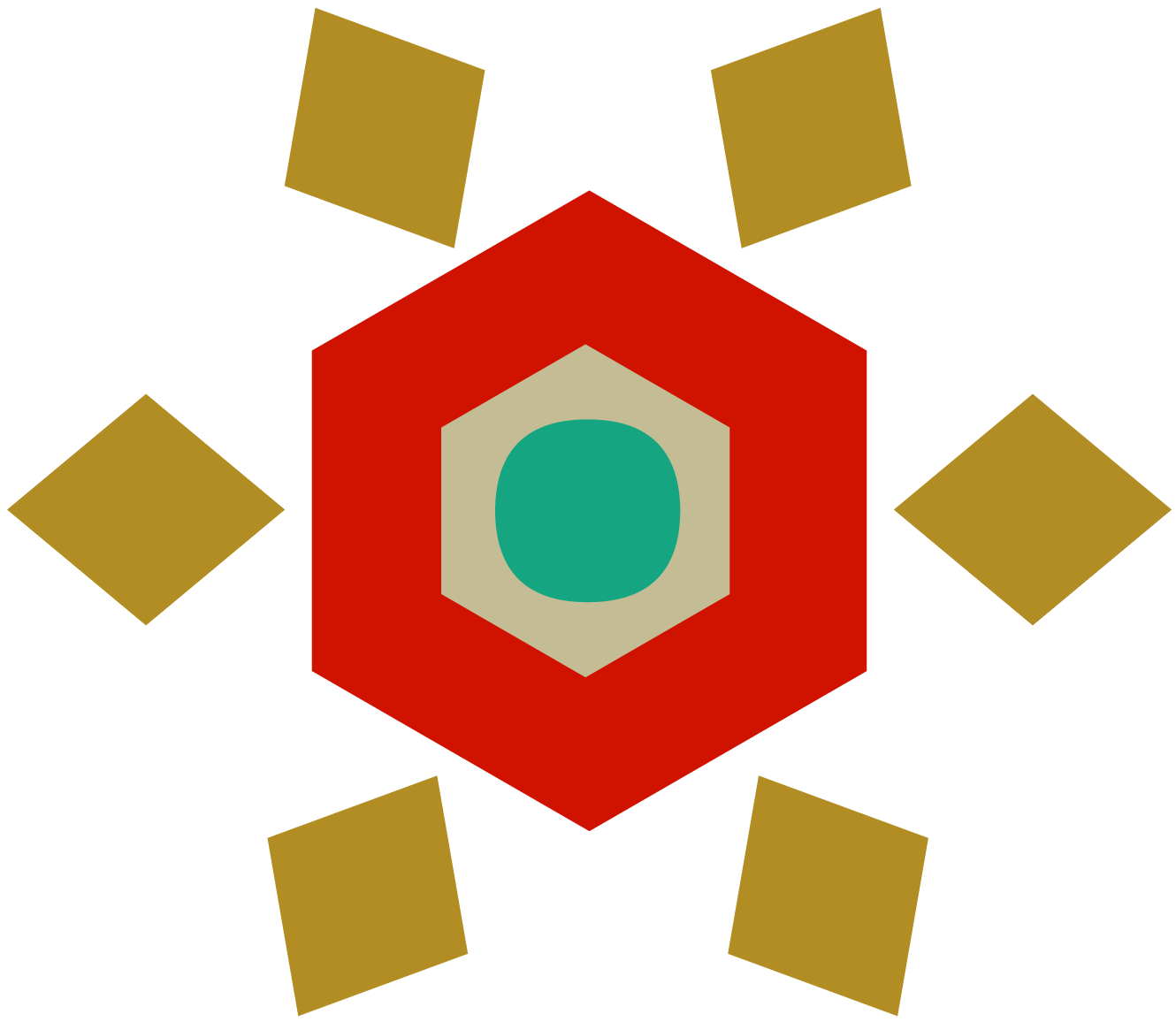
Submerge into the local way of life at one of the most vibrant part of the old city
We will Introduce you to the Dinsor district. A colorful collage of living area within a legendary food hub and sacred historical places
Sensing the Bangkokian lifestyle, learn about the old town residential area surrounded by legendary shops and restaurants around monumental historic sites

Before you begin the adventure,
here is a mini guide on how to use the webpage to gain a deep and immersive experience!
All Destinations
Chao Pho Suea Shrine
Fullfill mind and soul at the Chao Pho Suea shrine, the sacred landmark of Chinese Chaozhou

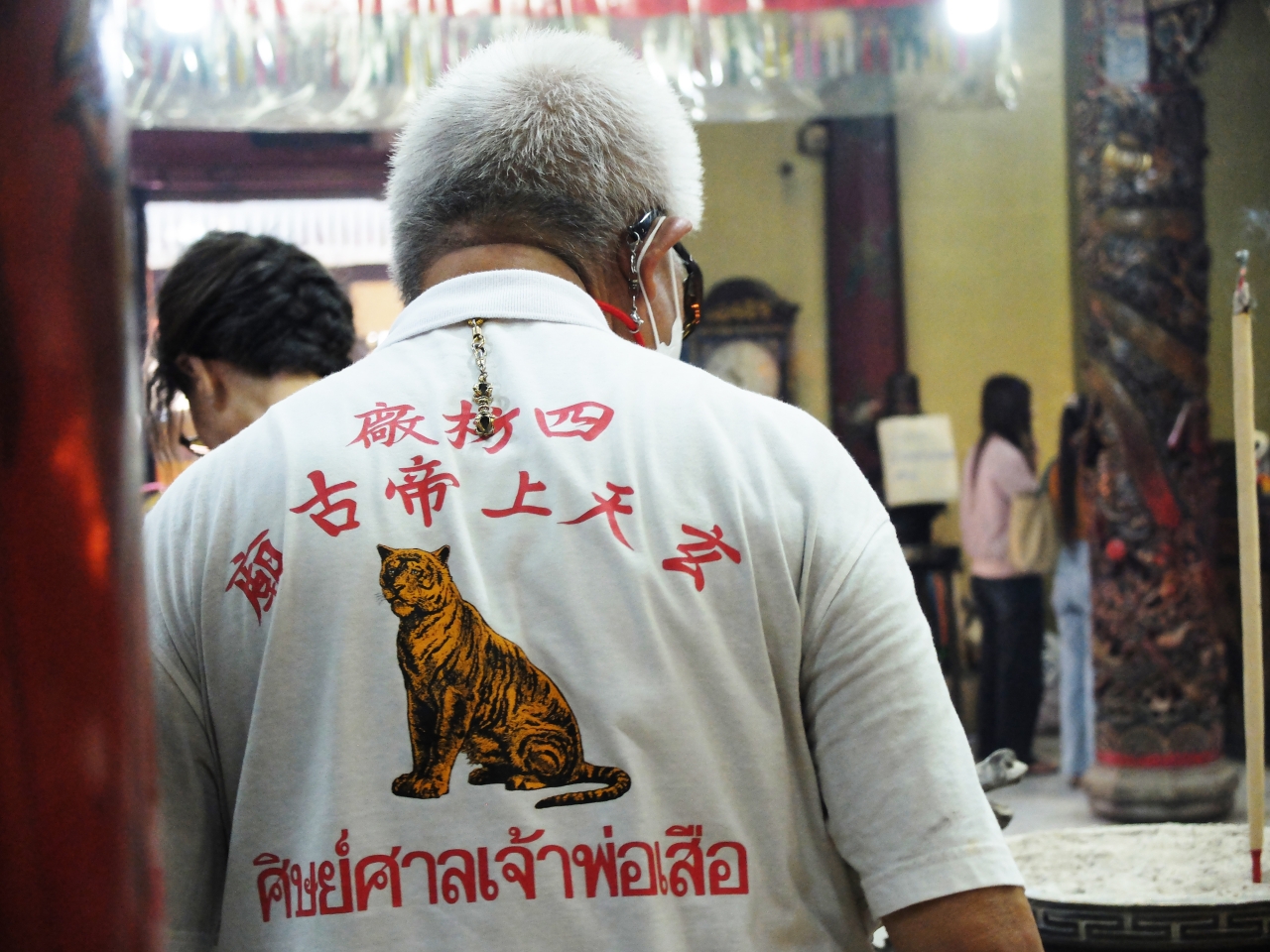
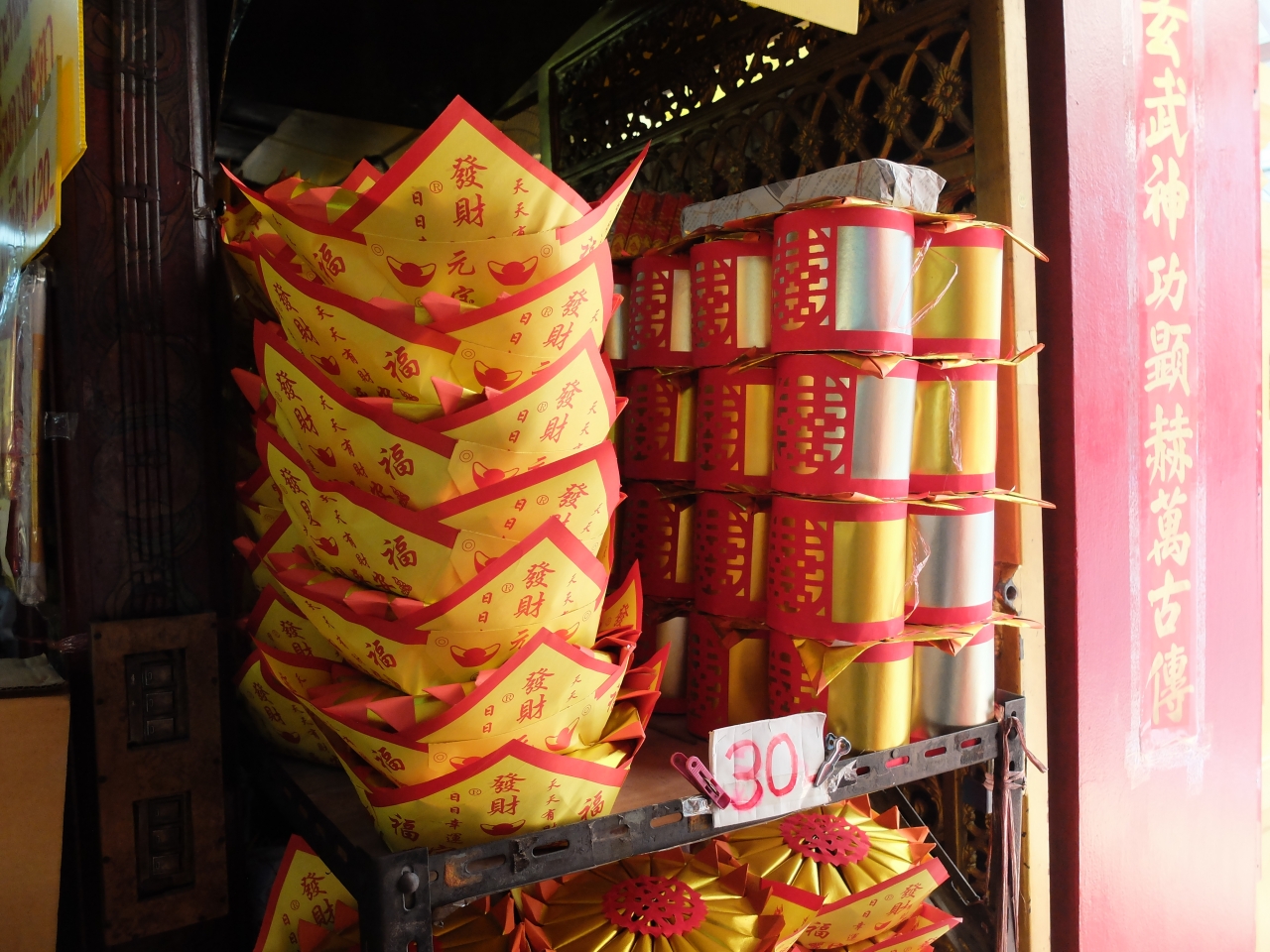
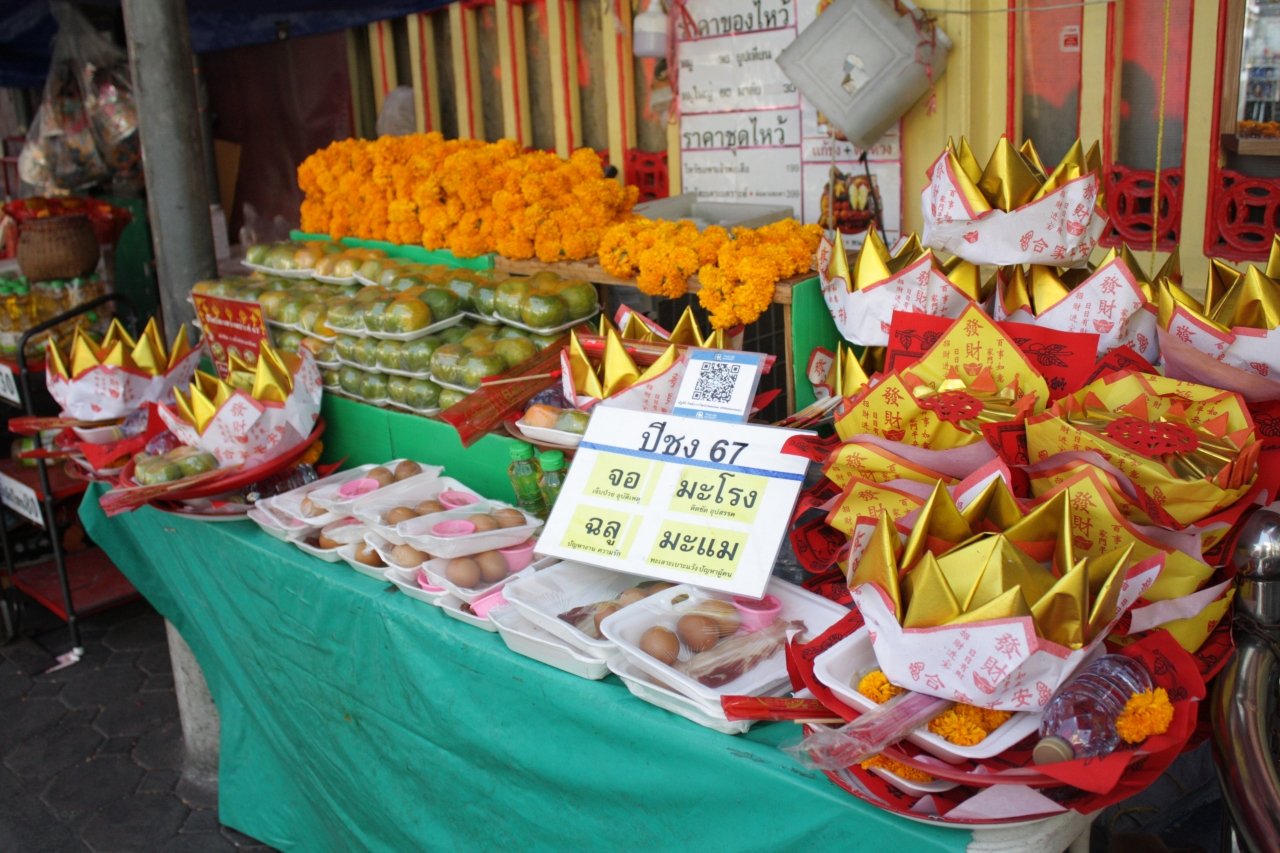
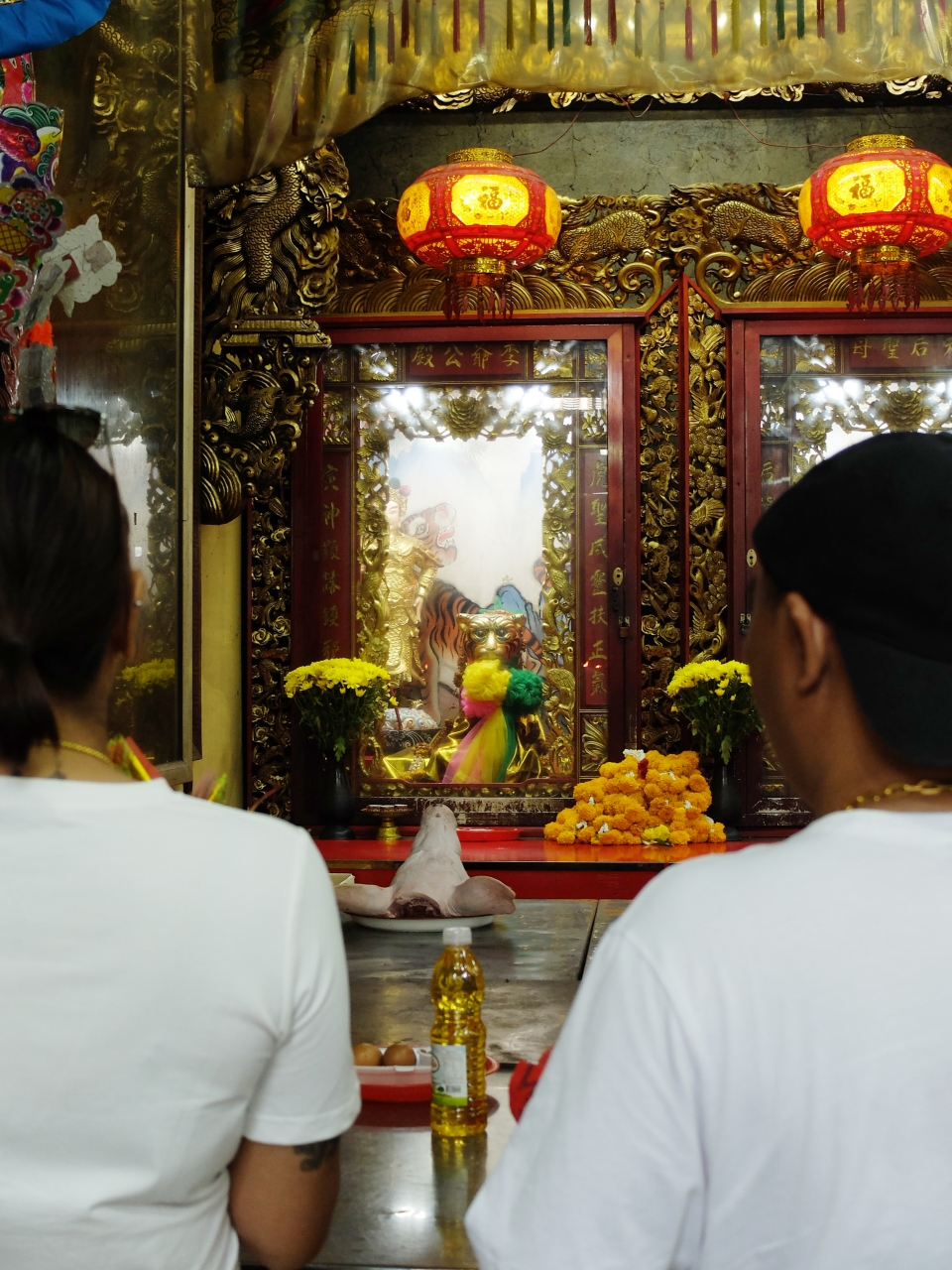
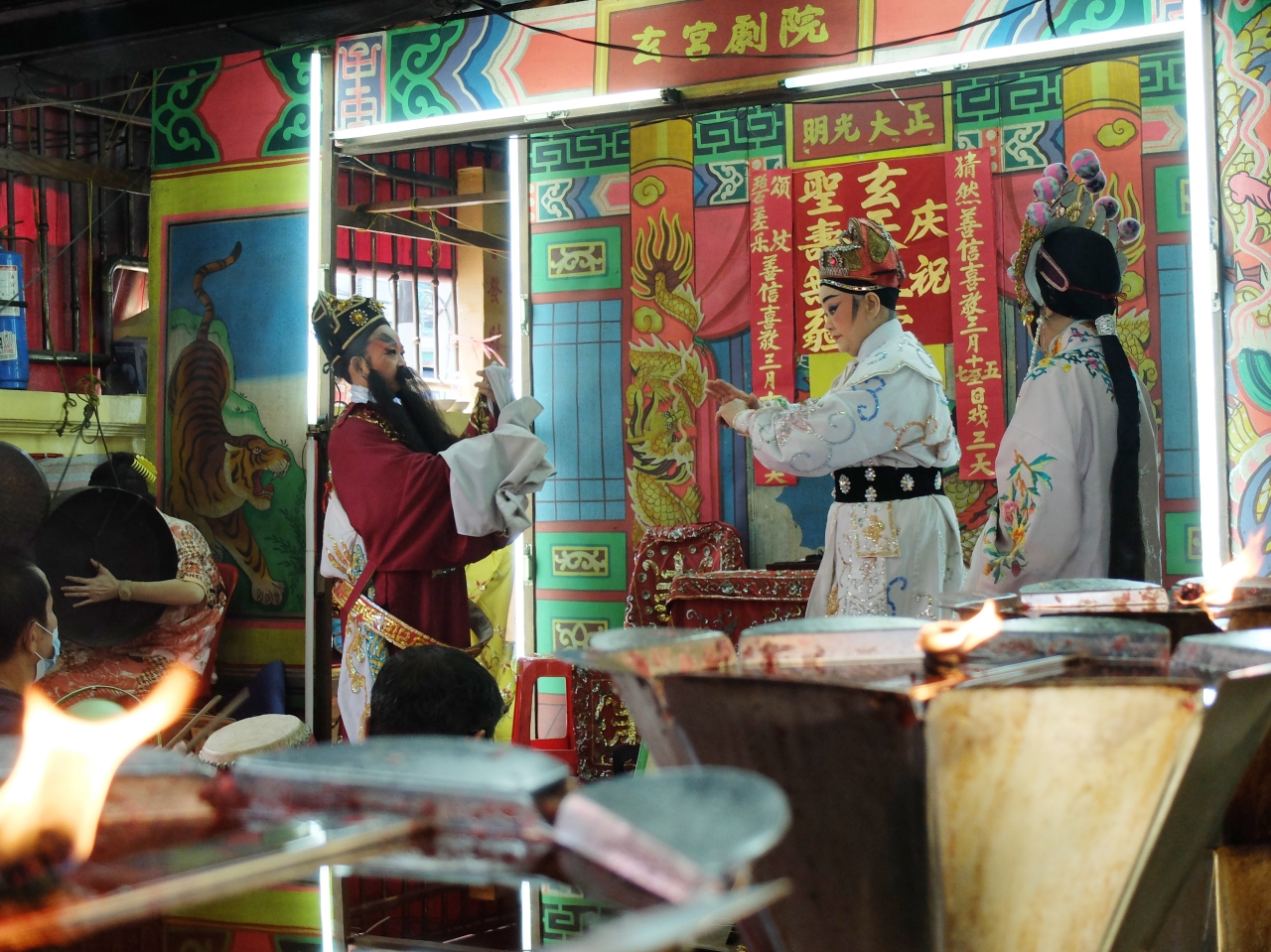
Recommendation and Tips
- Buy the praying materials outside before going in
| Operating Day: | Every Day |
| Time: | 6:00 to 17:00 |
| Price: | $ |
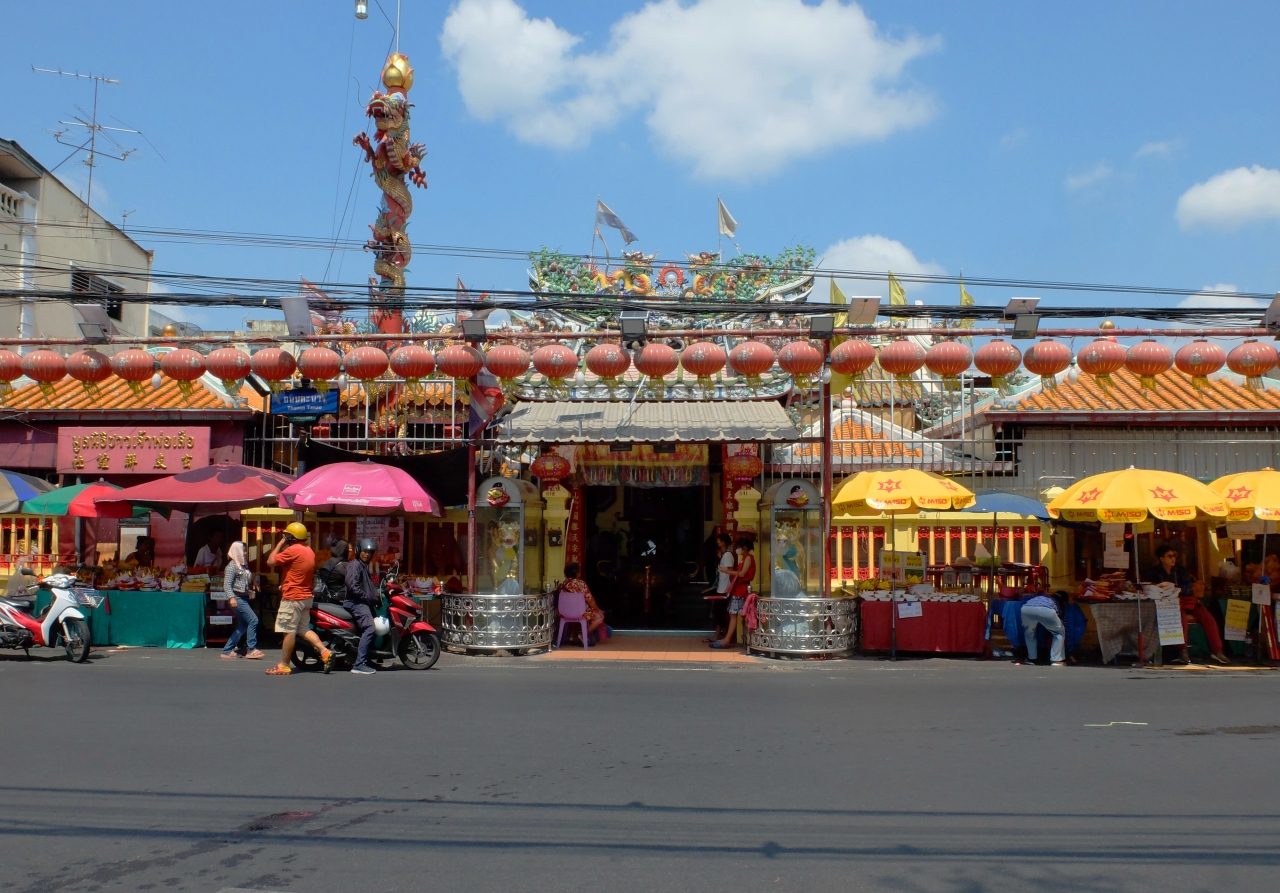

"Here Situating, the shrine of the first period of the Rattanakosin era."
A Teochew shrine dating back since 19th centuray where it has been with a center of faith for Bangkokian for over than 170 years old.
The Chao Pho Suea (ศาลเจ้าพ่อเสือ) Shrine or Tiger god shrine, is dedicated to, like its name suggests, a tiger god in Teochew (Chaozhou) mythology. This god is a revered deity in Chinese folklore especially , known for his power to protect, conquer adversaries, and ward off evil forces in all directions. People often come to worship, seeking fortune and good luck in their businesses, and overcoming obstacles! Particularly, those born in the Year of the Tiger in Chinese zodiac sign frequently visit this shrine to reinforce their fortune and virtues.
Here is a quick guide for you. If you want to know what your Chinese zodiac sign is, just grab your phone, and google your birth year and Chinese zodiac sign! If you happen to be born in the year of Tiger, then this shrine will probably give you extra blessing! Basically!
This shrine is situated at the intersection between Maharat Road and Tanao Road. Originally, during the reign of King Rama III (1824-1851), the shrine was located on Bamrung Mueang Road, where a significant number of Chinese residents resided. However, during the reign of King Rama V (1853-1910), the construction of Bamrung Mueang Road necessitated the shrine's relocation to its current position at this intersection.
"Here's a fun fact! The legend of 'Tua Lao Aia' or the Tiger god in Thailand is quite different. Actually, this god did not have the body or the vehicle of a tiger in any way. The were many tales and myth about the origin of this shrine. One of the the stories why local people call him 'Tiger God' began in the era of King Rama V (1853-1910). There was a shrine for 'Tua Lao Aia' in that area. Later, someone who wanted to dismantle the shrine was eaten by a tiger. The villagers believed that the tiger was the god's servant. Therefore, it was later called the 'Shrine of the Tiger God.'"
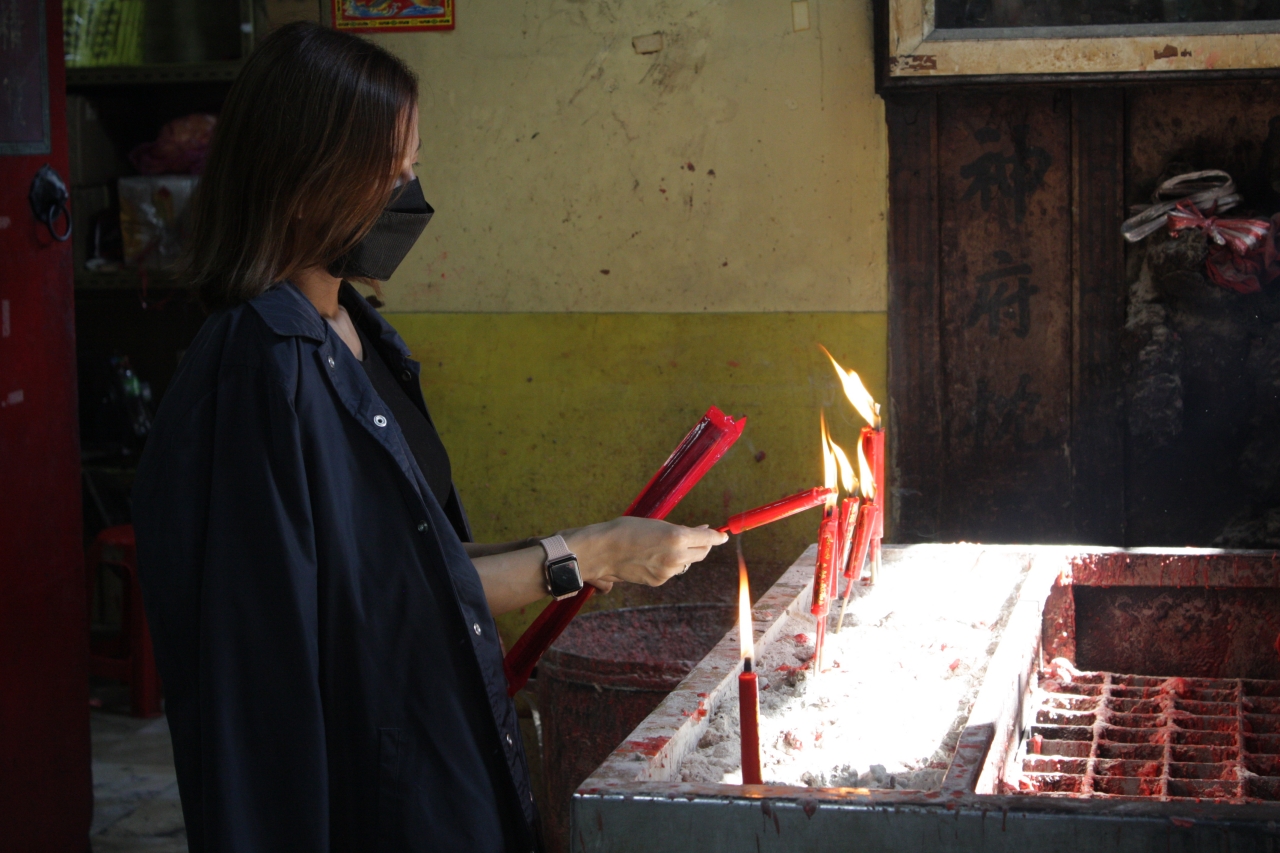
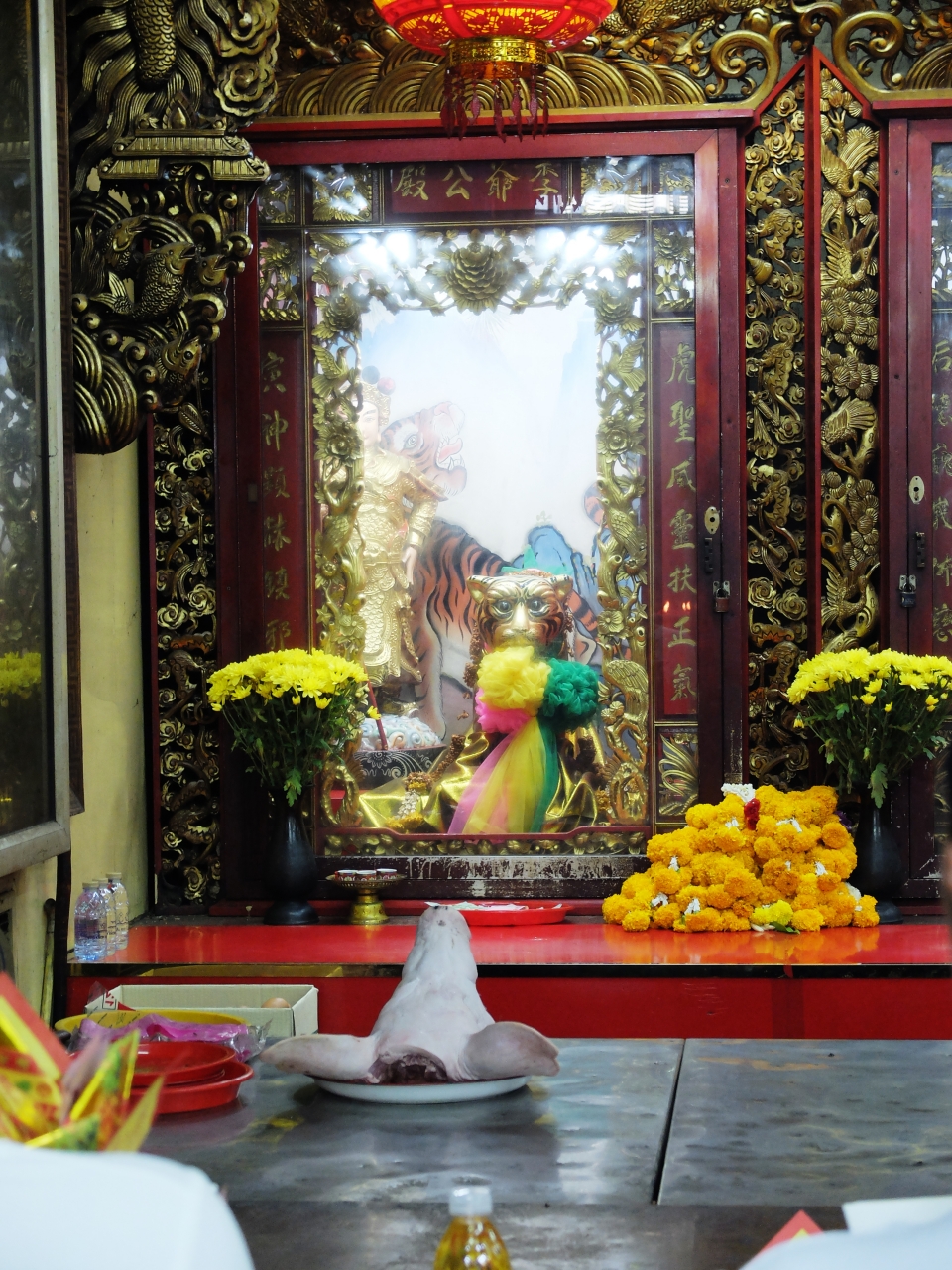
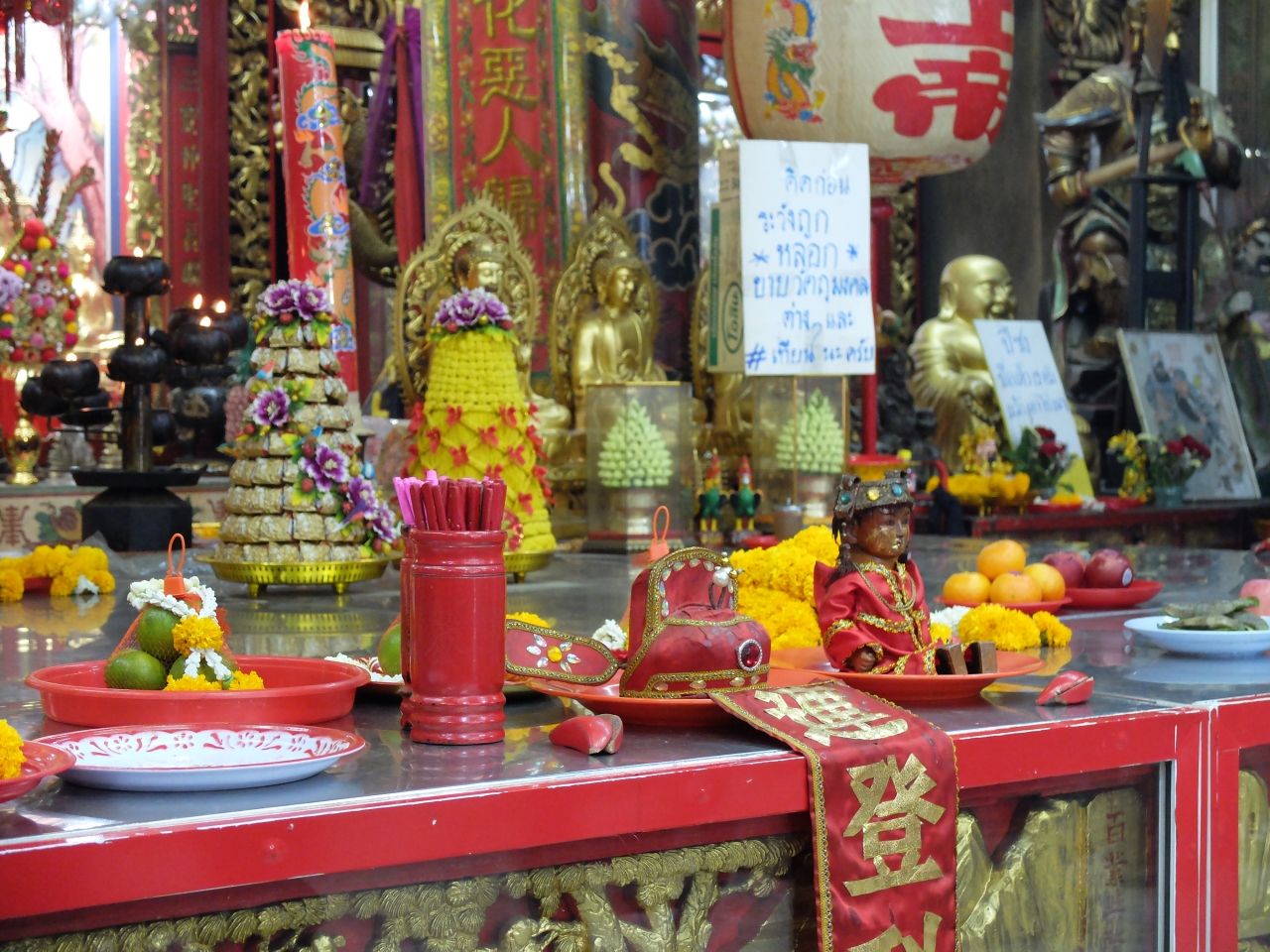
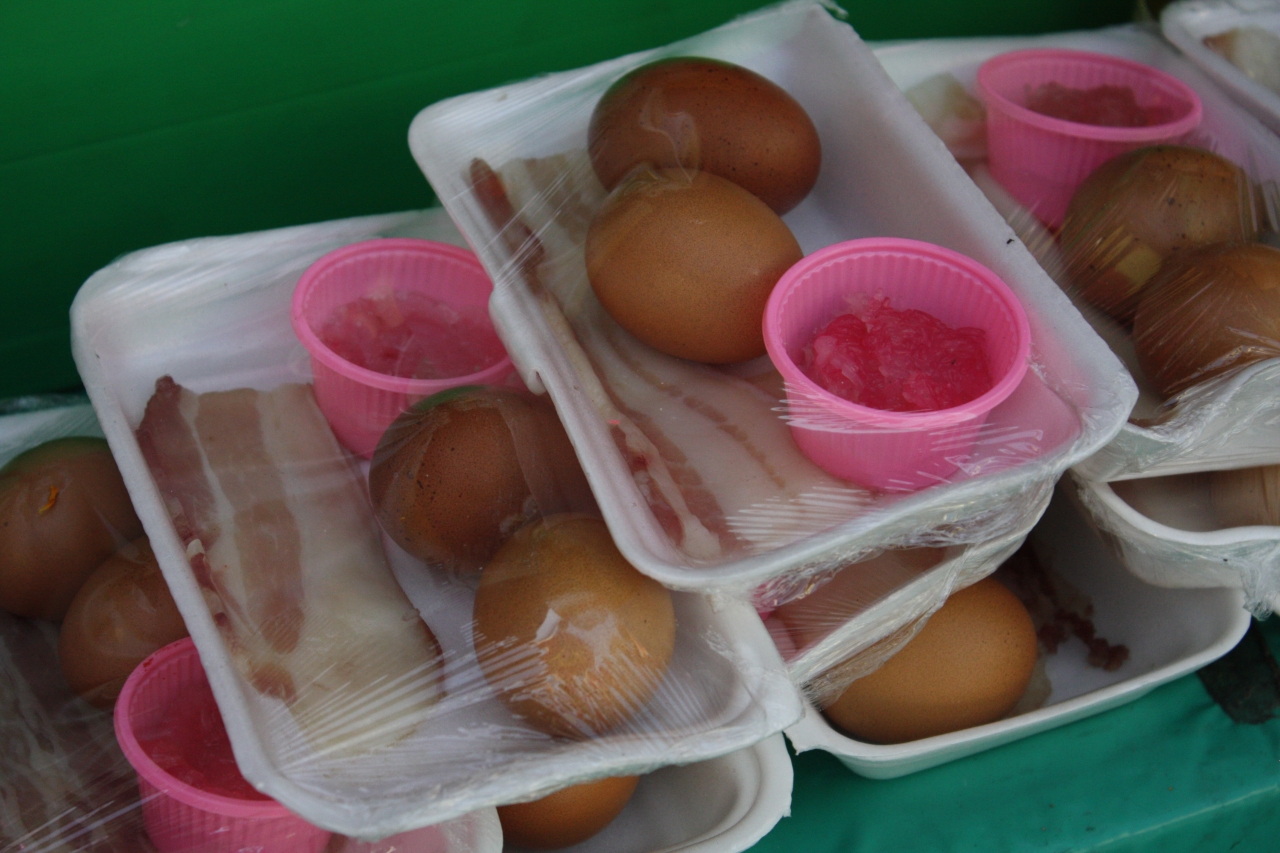
The shrine building is of Chinese architectural style. Inside the shrine, there is an altar for worshiping Tua Lao Aia, or Xuan Tian Shang Di. This god in Chinese Taoist tradition known for its power to protect and conquer enemies, as well as ward off evil influences in all directions. People often come to pay homage to strengthen their luck, prosperity, and to ward off obstacles according to Chinese beliefs. Especially, those born in the Year of the Tiger are inclined to come and worship to enhance their fortune and blessings. Additionally, it serves as a place for seeking assistance in resolving problems related to the Chinese zodiac year of birth.Typically, people come to seek blessings for their work, financial matters, or request assistance in overcoming obstacles in life.
Would you want to try worshiping?
The worship process includes bowing with 18 incense sticks, placing them in six censers, using a pair of red candles, and presenting a pair of betel leaves and areca nuts as offerings. Additionally, for the Tiger God worship ritual, one must purchase an offering set consisting of three-tiered pork, fresh eggs, and sweet sticky rice, which make sense because tigers eat raw meat! So make sure you purchase the offering set outside the shrine, and start the ritual!
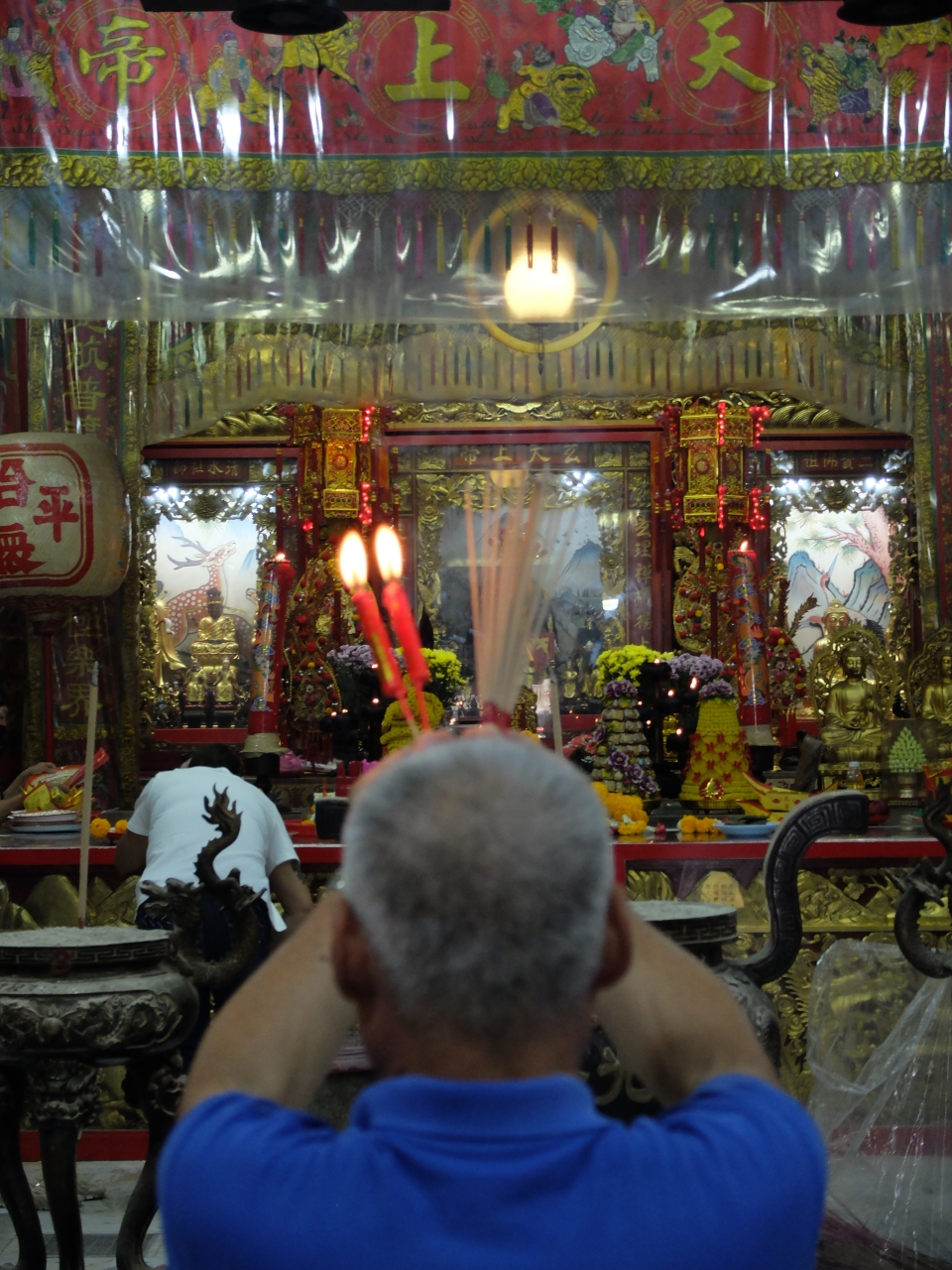
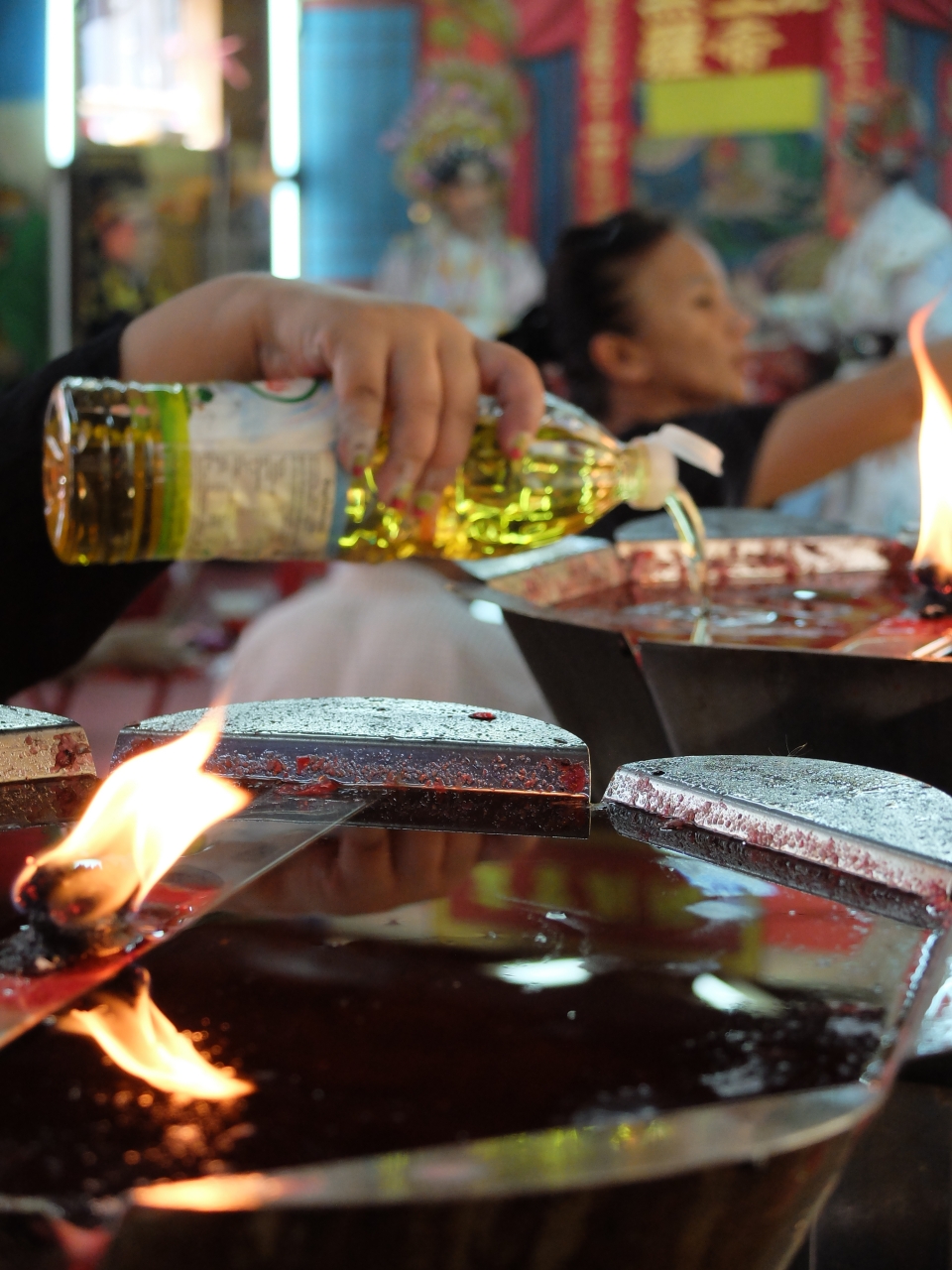
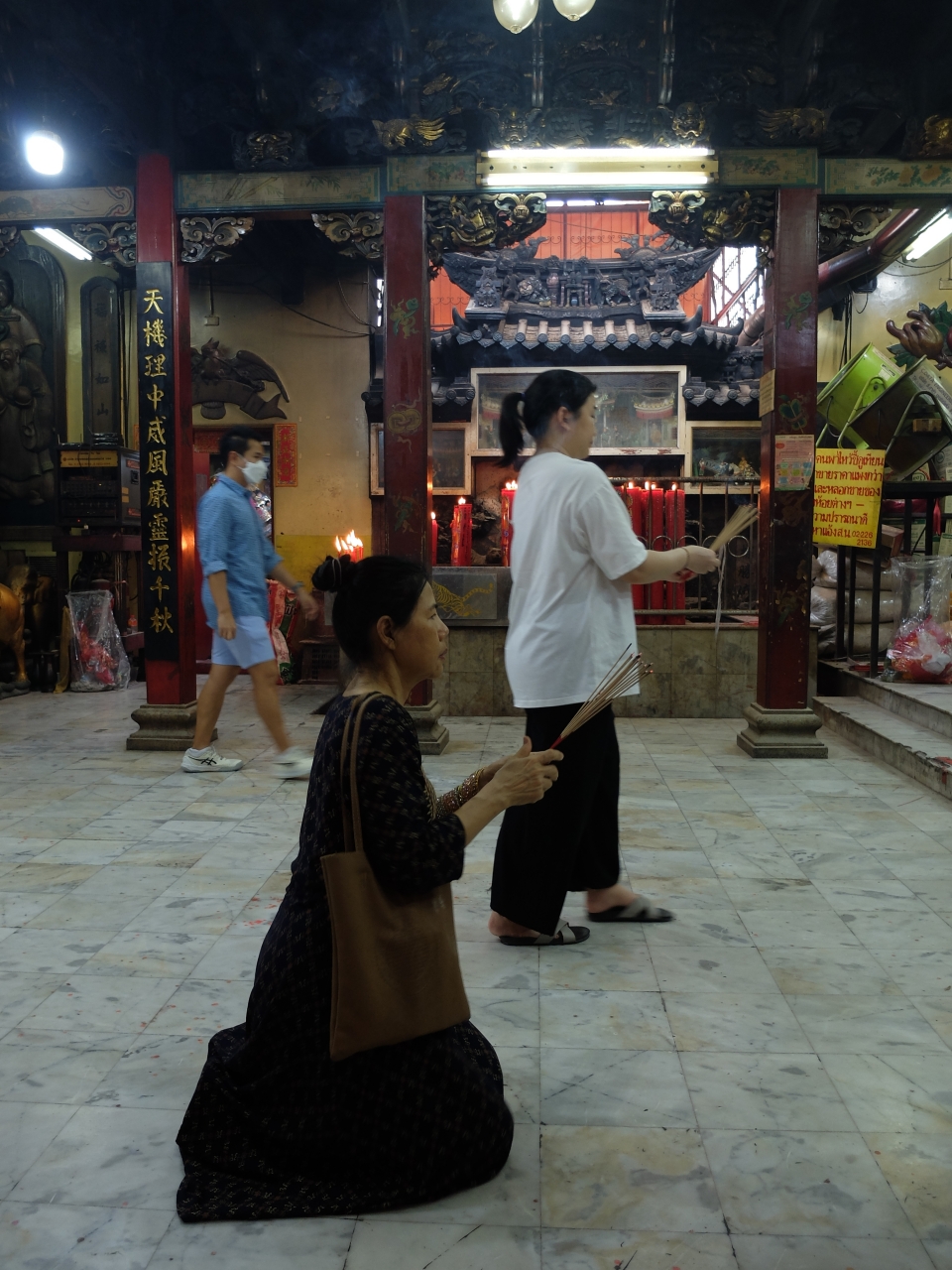
Kope Hya Tai Kee
Legendary cafe of the community, a resting area of Bangkok old town
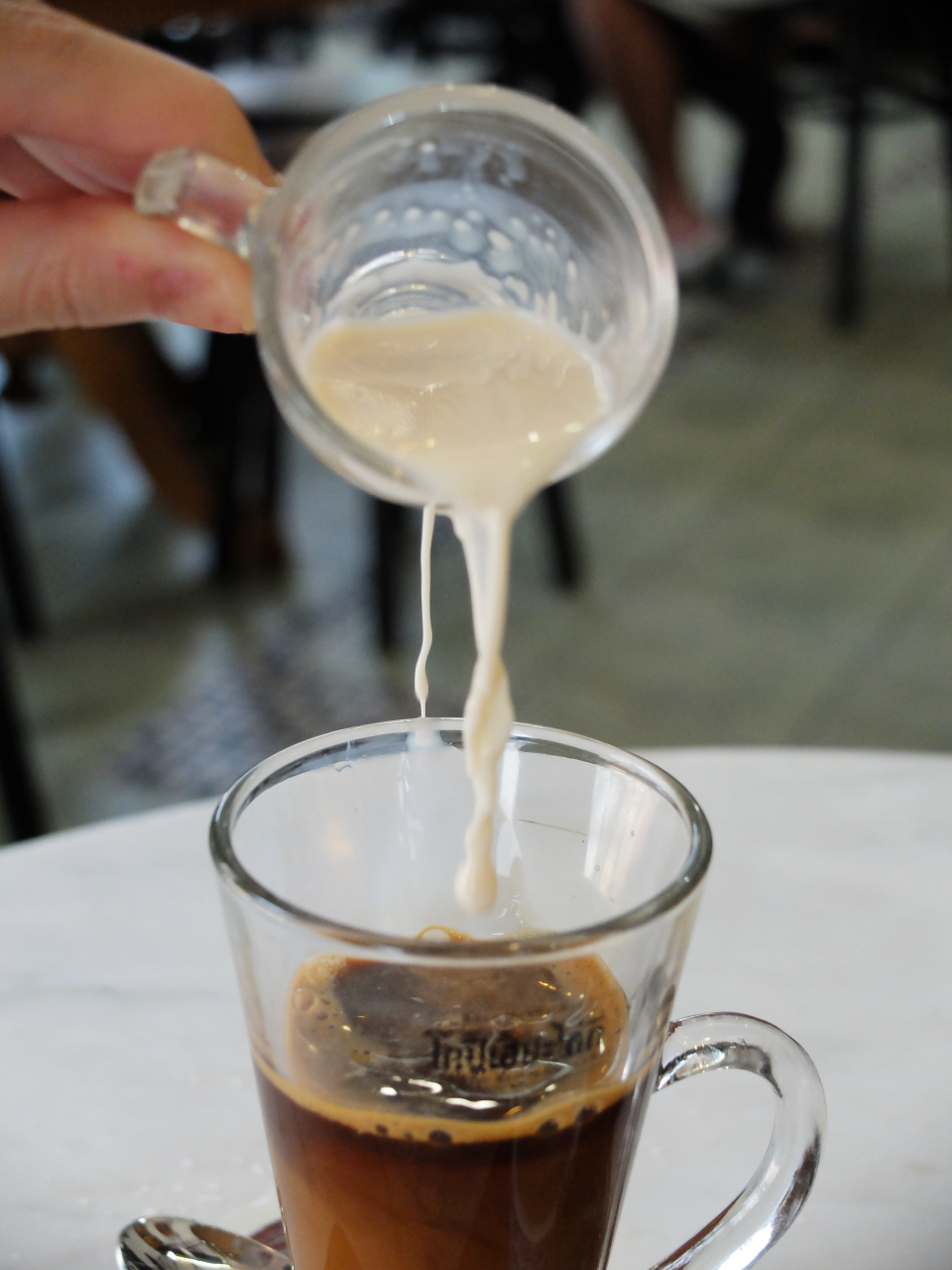
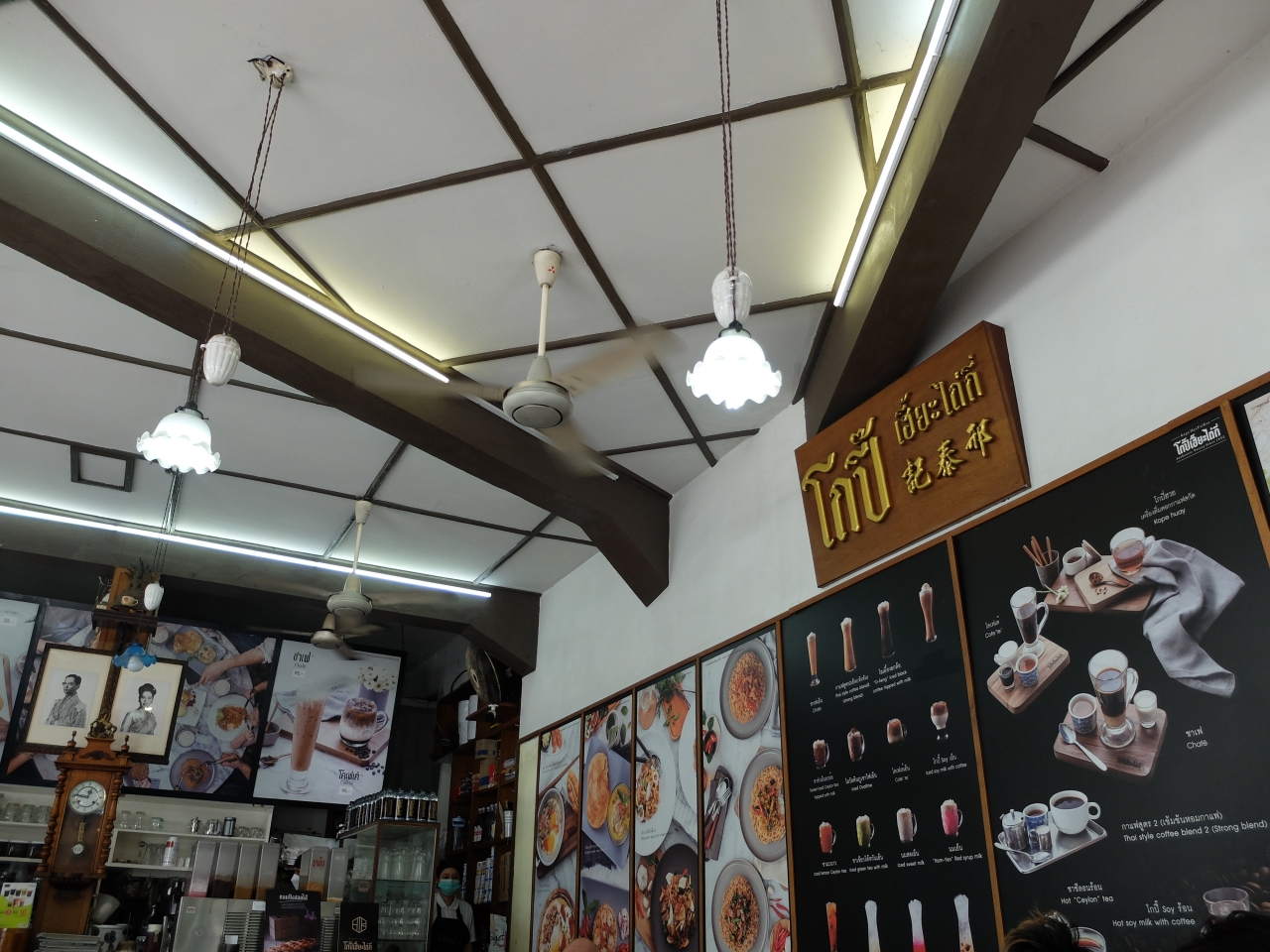
.jpg)
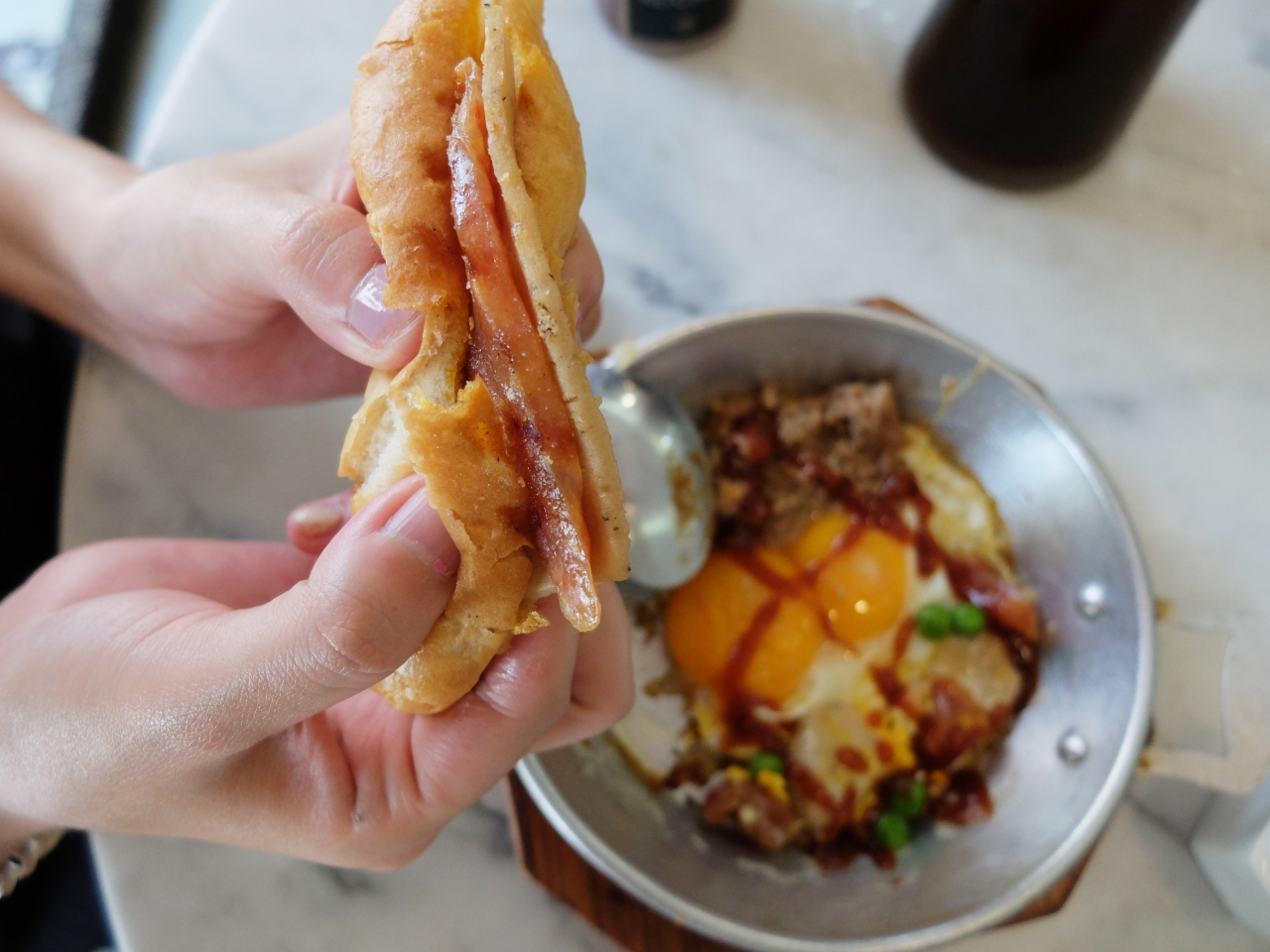
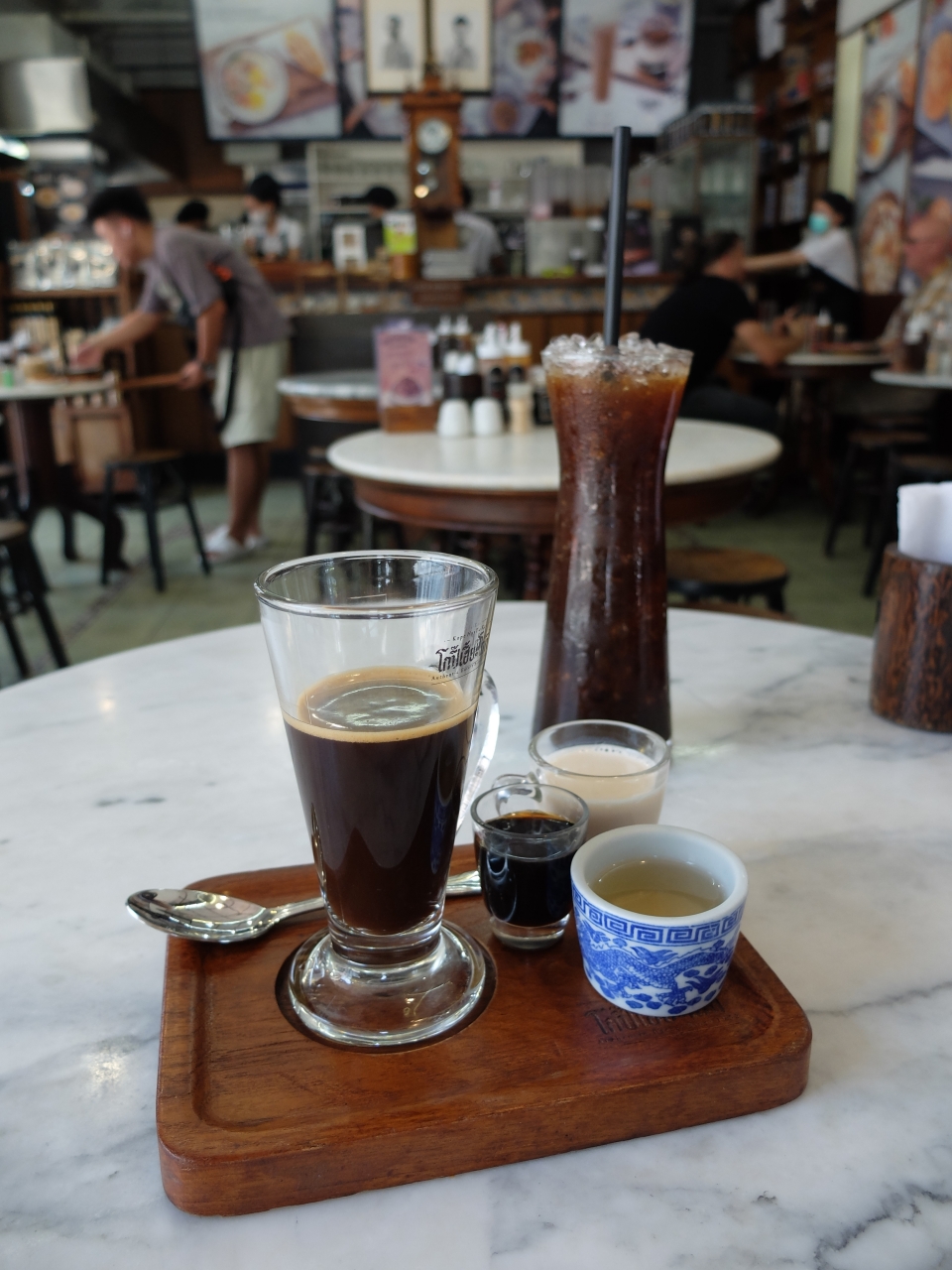
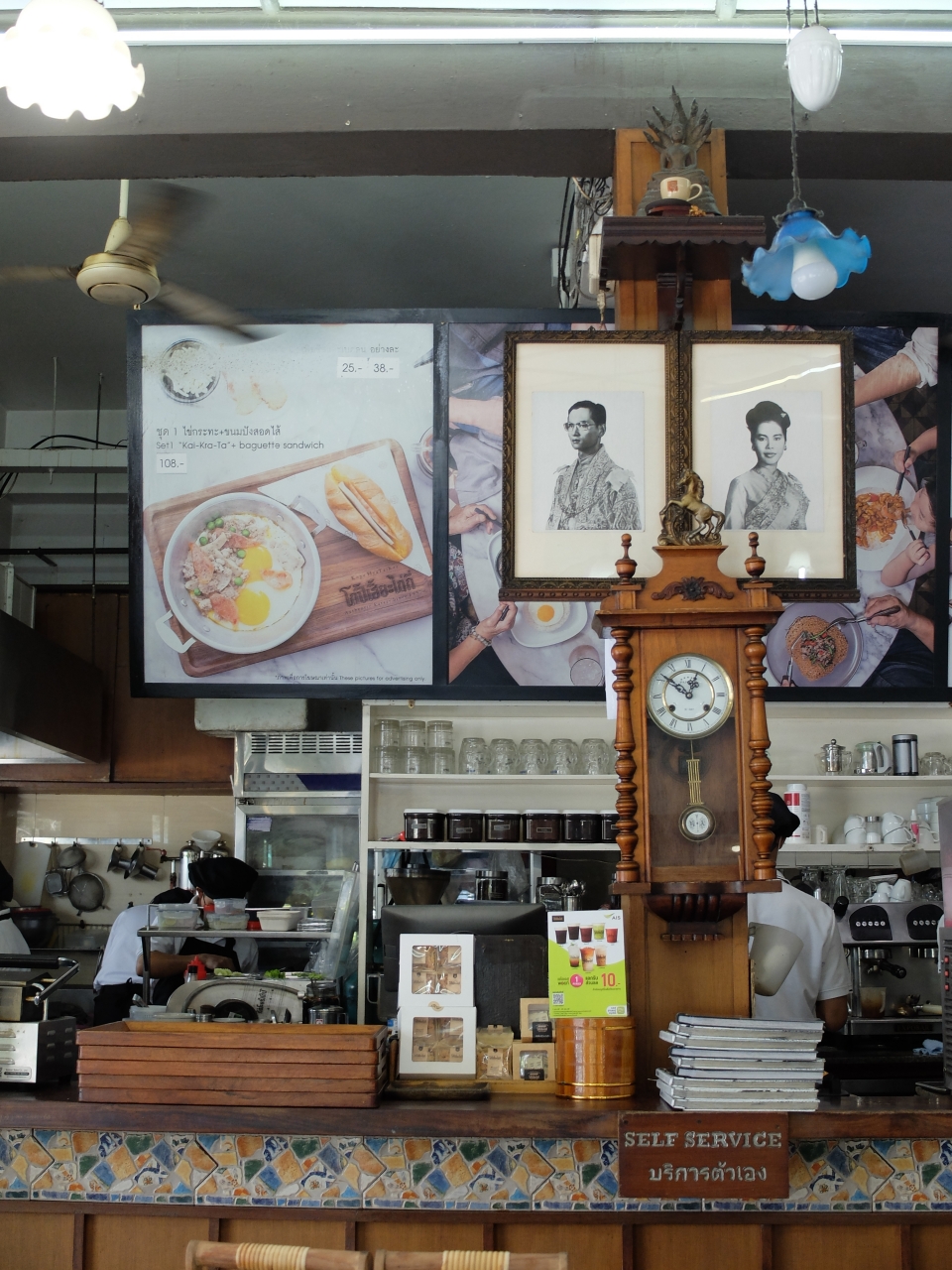
Walking Path Overview
Relax and refresh with a drinks and delicious snacks at the Kope Hya Tai Kee. The Coffee Shop that lives with Saochingcha, the city landmark, and the community. Kope Coffee Shop has been a favorite spot, offering delightful coffee and treats for about 70 years.
Recommendation and Tips
- Avoid going during peak lunch and breakfast time (very crowded)
| Operating Day: | Every Day |
| Time: | 7:00 to 20:00 |
| Price: | $$$ |
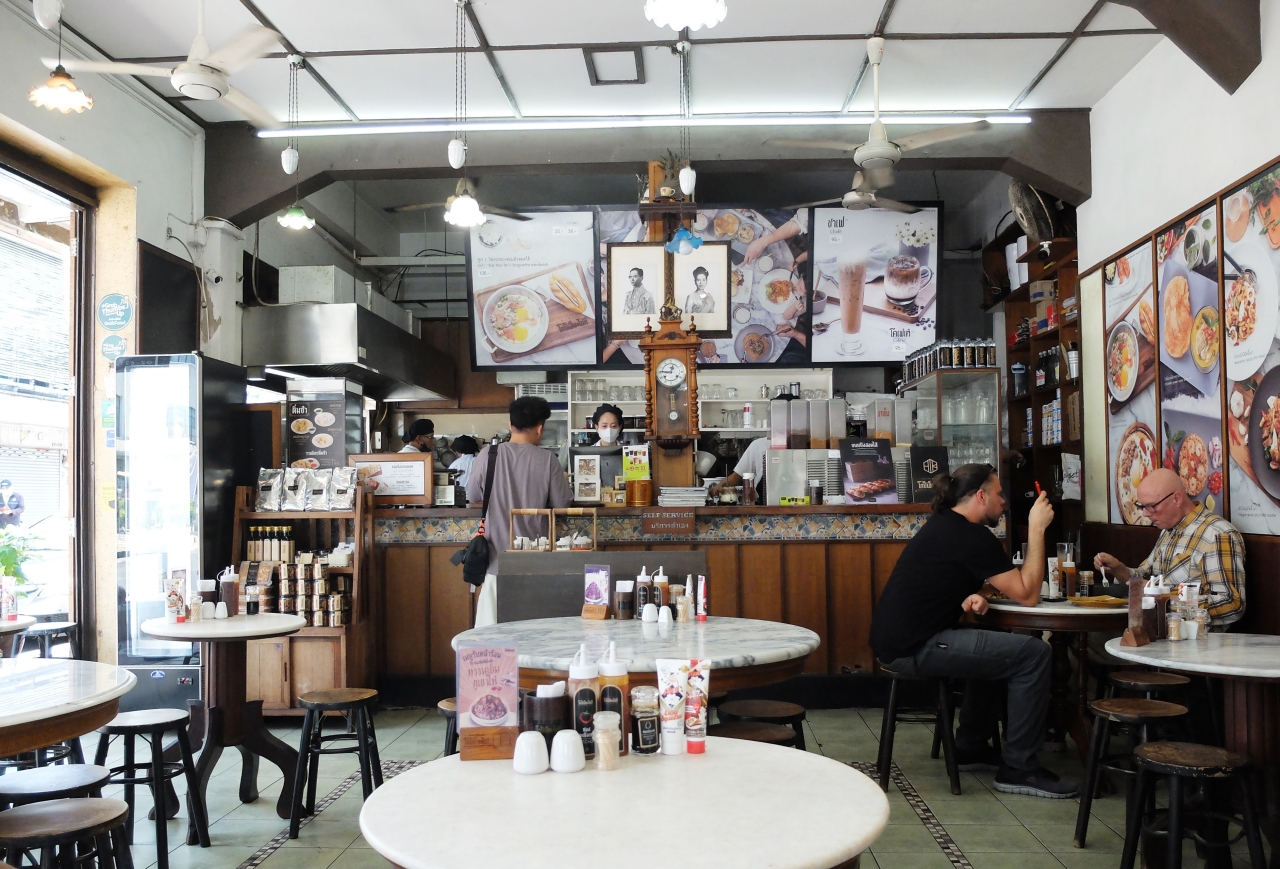

Kope Hya Tai Kee: The living room of the city with homely drinks.
Have a seat and enjoy traditional Thai coffee, or try thier all-day Thai light breakfast before continuing to explore other points of the city.
This coffee place is one of the most crowded in Bangkok old town. Let’s see if you can manage to find an empty table in the cafe. The service here will allows you to have an authentic Thai experience as it can gets super busy sometimes and the waiting time for the food and drinks can take up to 20 minutes.
Anyway, hope you could find the table and here are some guideline for you on how to order snacks and drinks here.
Here are some drinks we would love to recommend from the menu!
This cafe is well known for their menu called “Ko Feh Teh” (โคเฟ่เต้) which uses sugarcane, and milk as a sweetener, mixed alongside the Thai coffee beans which create a unique, Thai style coffee that you can not find anywhere else.
Another recommendation for you to order is Oh Liang (โอเลี้ยง) or a Thai style coffee! It is a type of Thai Black iced coffee that comes from a combination of not just coffee beans but also, various seeds and grains such as soybeans, corn, rice and sesame seeds! Oliang actually is a teochew dialect most commonly spoken by Thai Chinese, indicating that the drink itself comes from China. "Oh" means black, and "Liang" means cold.
Let's order! and here is how to order:
- Take the menu, there are english explanation on the menu where it will be easier for you to choose.
- When you are ready, walk to the counter and order.
- The waiter will give you the table number then just patiently wait and listen carefully for your table number.
- Once they call your table number, bring the table number back and get your drinks and snacks to your table.
- You can take take cutlery and straw from the small station if you needed one and enjoy!
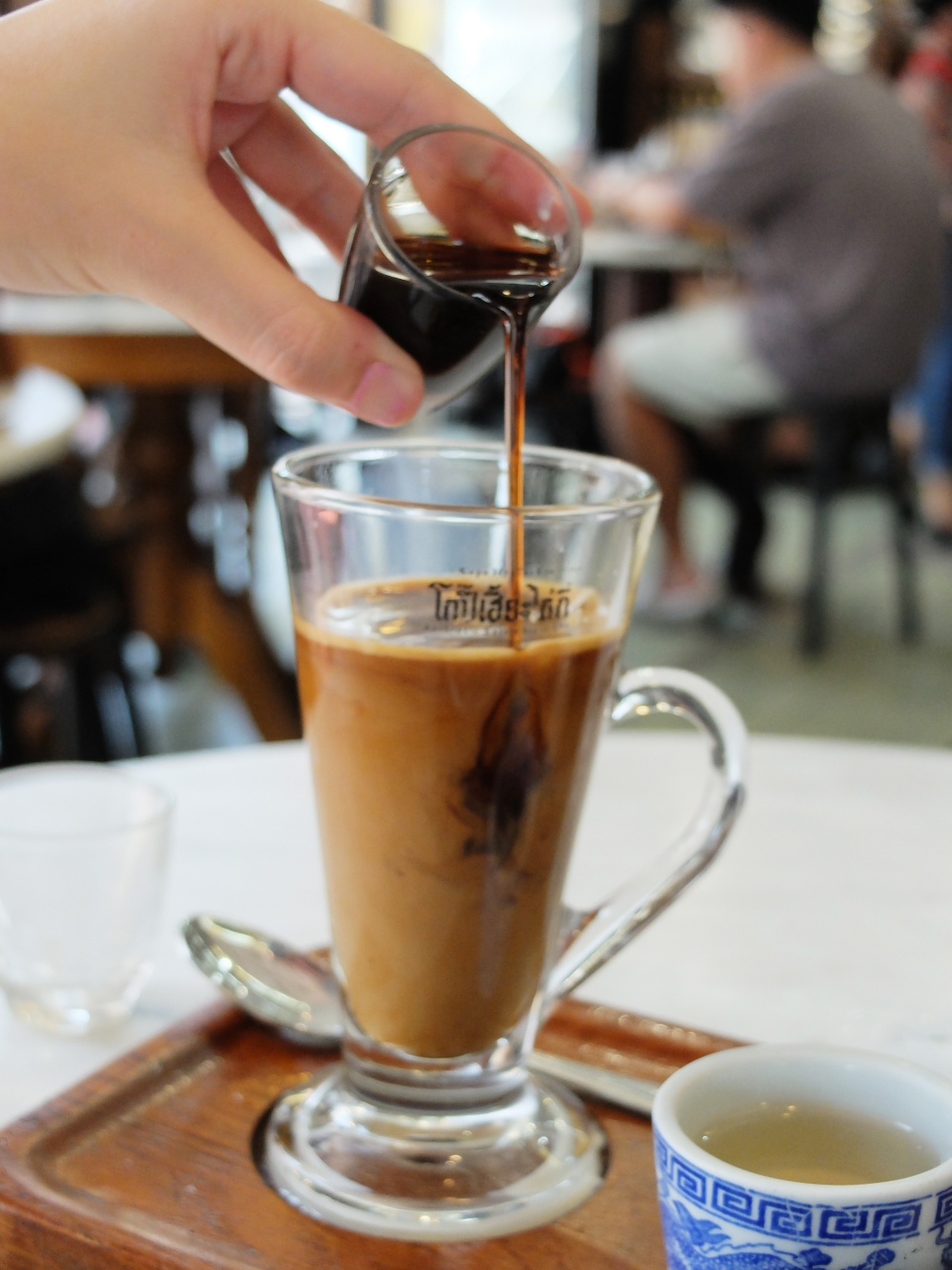
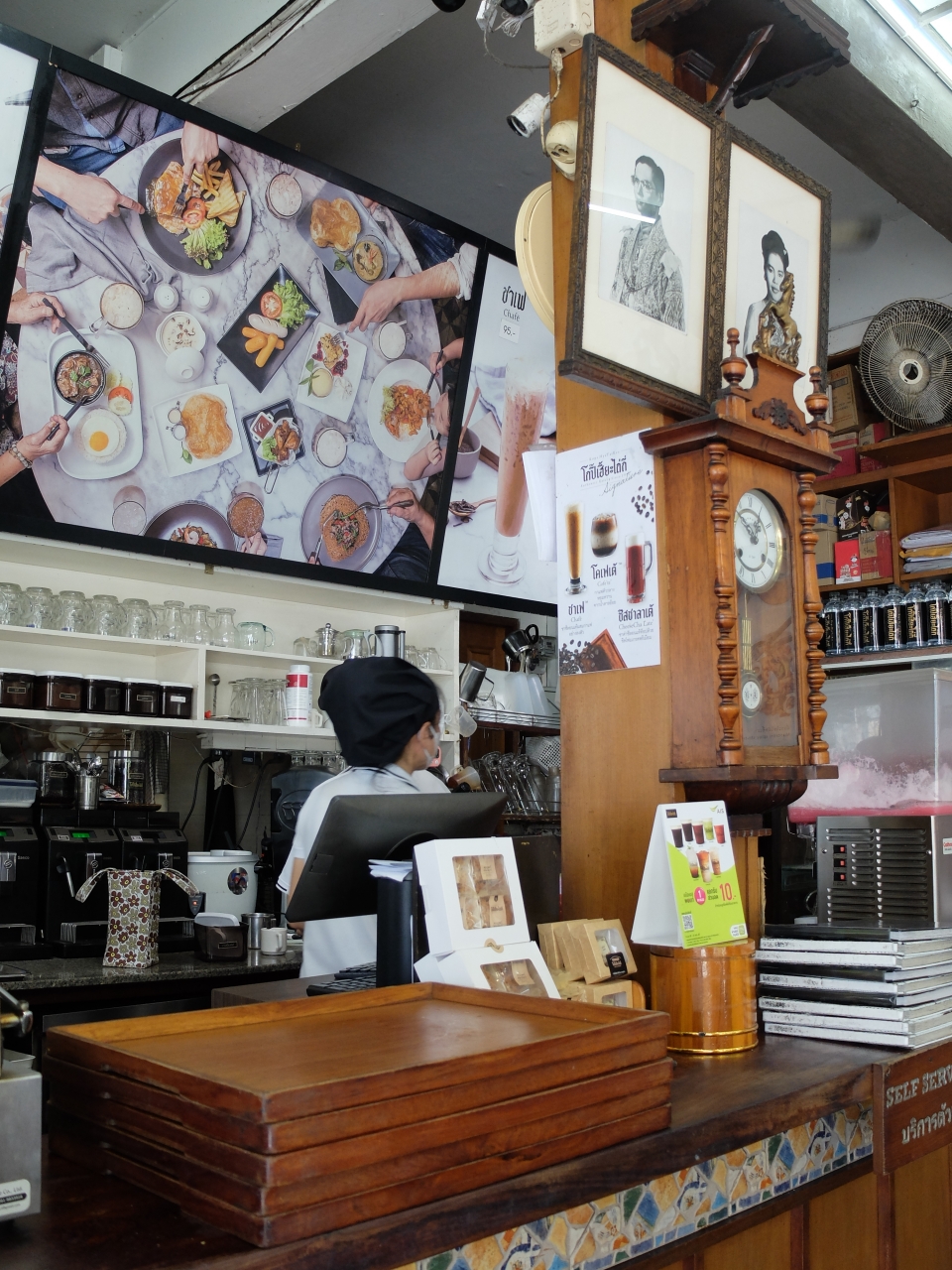
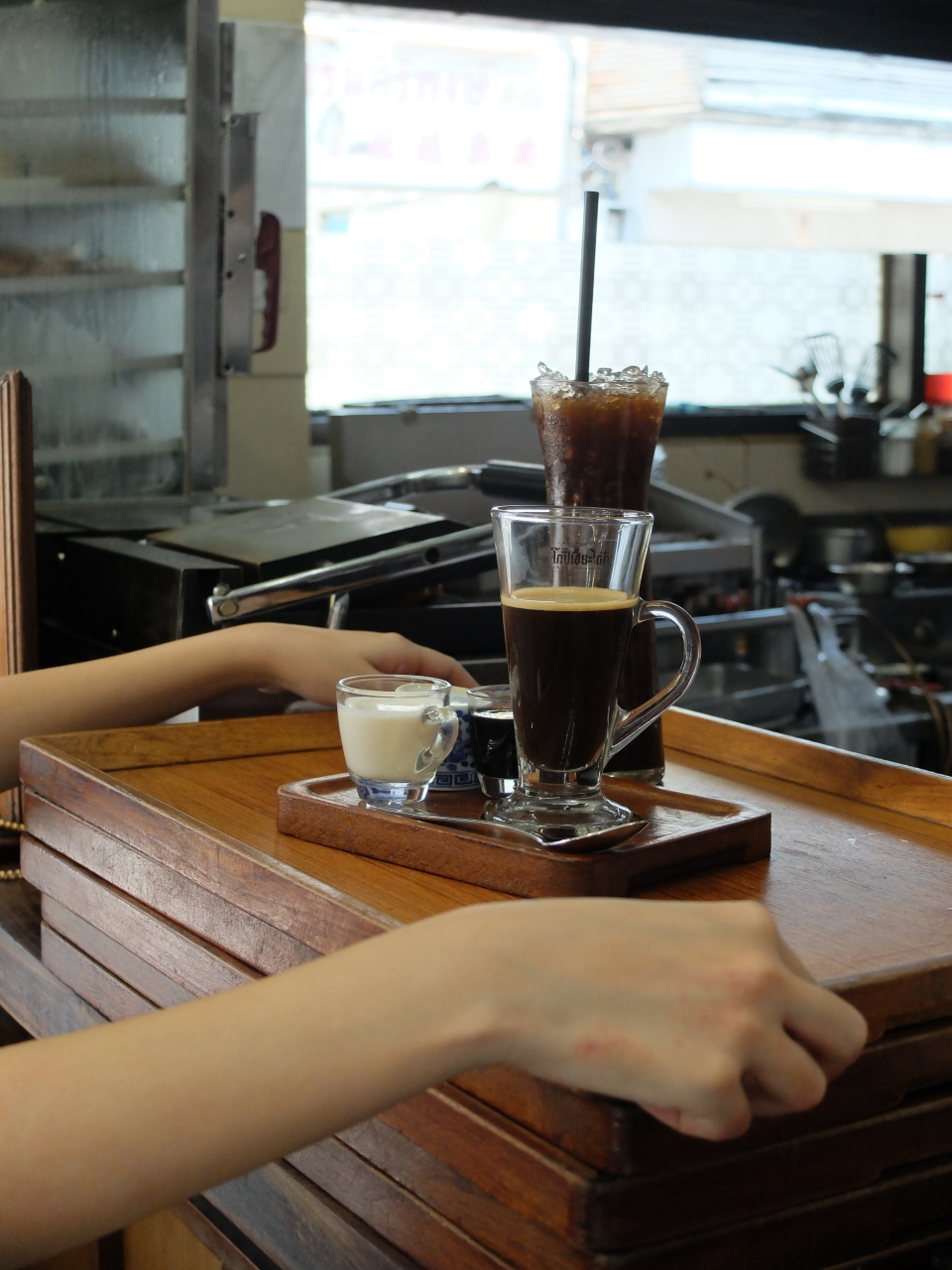
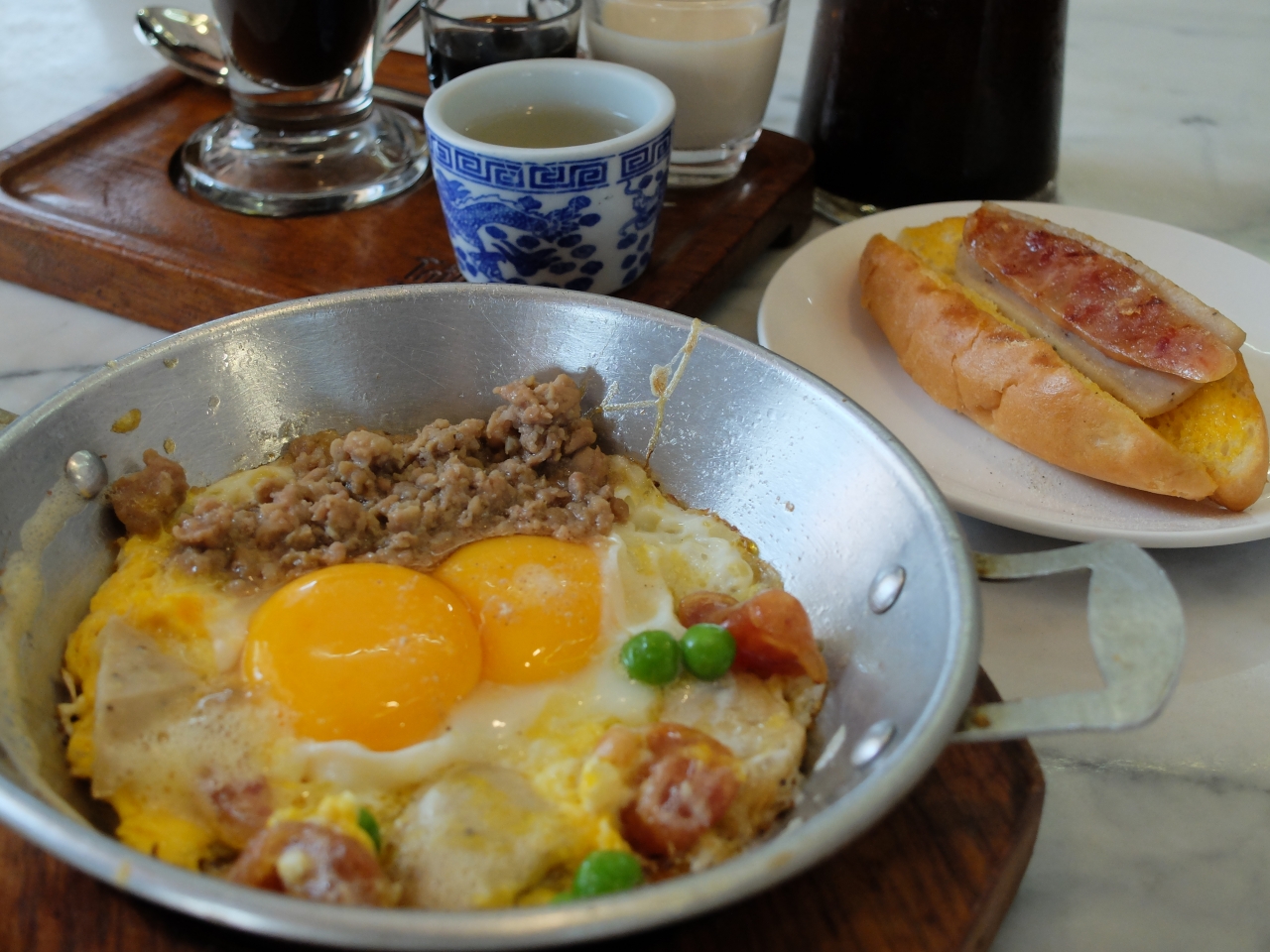
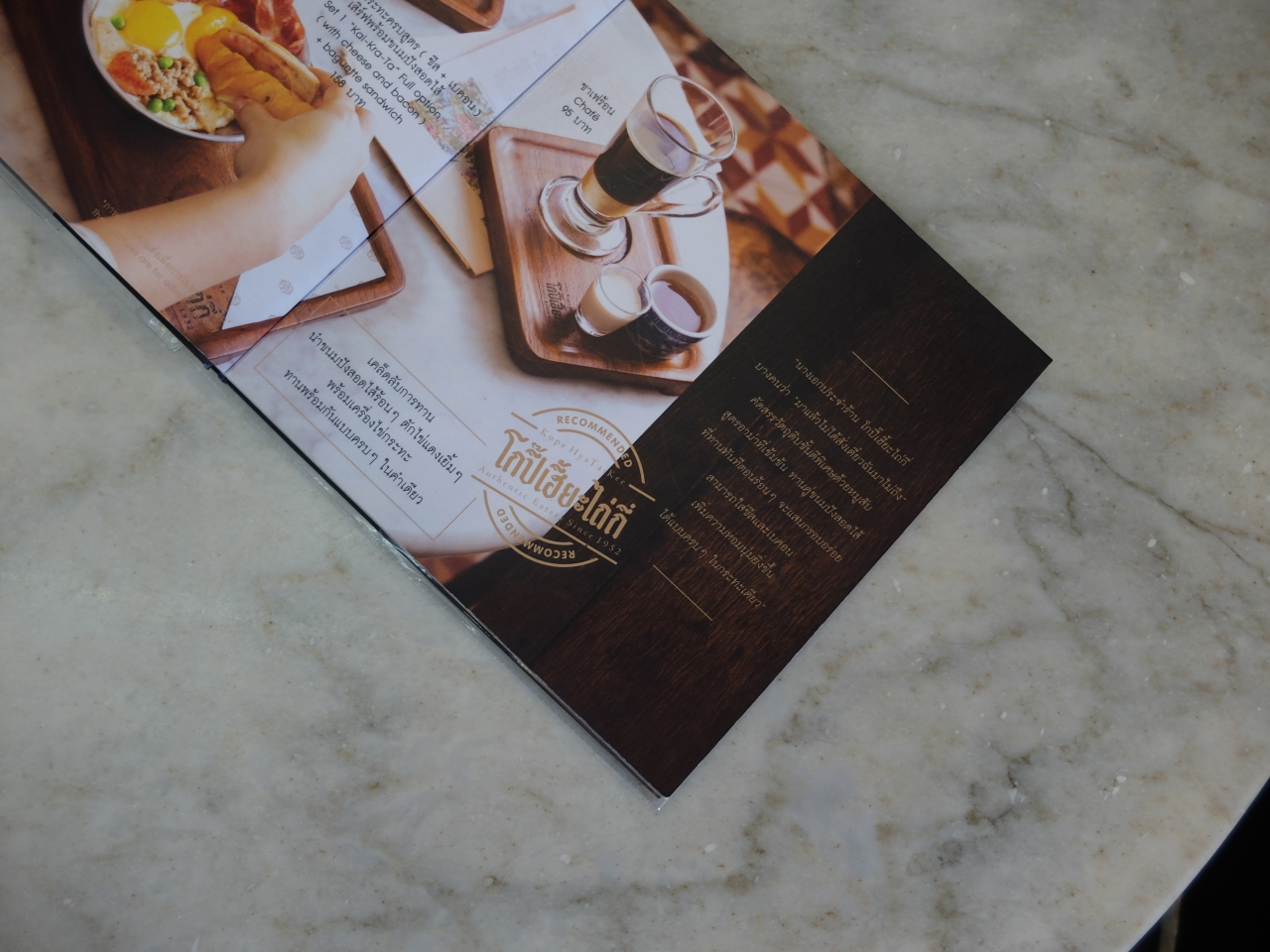
Kopi Hia Tai Kee café has been a beloved beverage and breakfast spot for Bangkokians for over 70 years, since 1952. Originally a grocery store selling both tea and coffee in a small corner, its popularity grew over time due to the cozy atmosphere, becoming a social hub for the community. Consequently, the shop transitioned into a breakfast restaurant. Today, visitors can still experience the old-school vibe, like a time machine transporting them back to Bangkok in the 1950s and 60s.
Among the most popular dishes are pan-fried eggs, known locally as Kai Kata (ไข่กระทะ), and traditional Thai coffee. Kopi Hia Tai Kee café has continued to evolve, developing new drink and food recipes to offer a variety of menu items that align with modern trends.
Dinsor Art Gallery and Studio
Little Gallery and studio that support contemporary Buddhist arts and artifacts and exhibition platform for artists
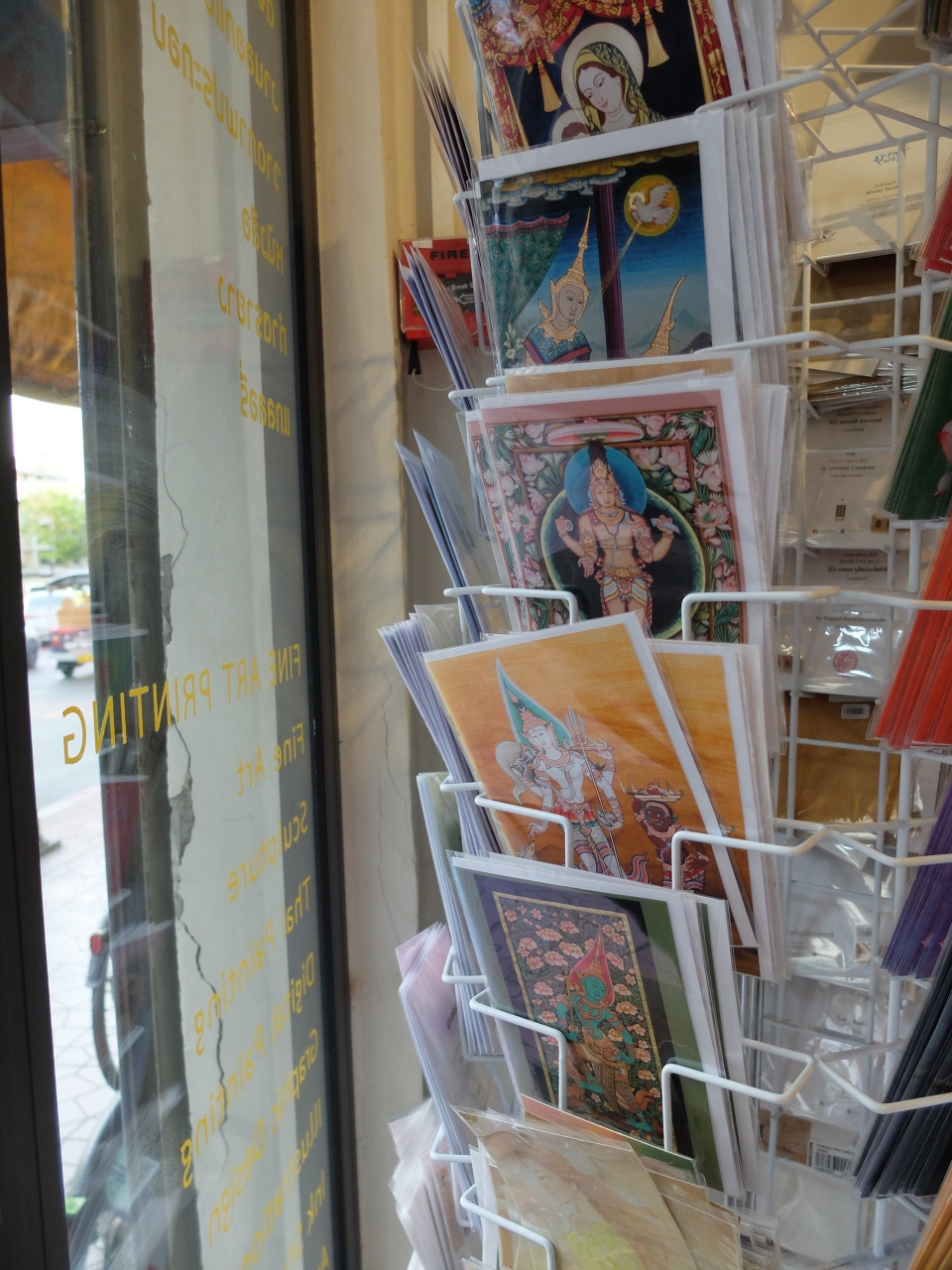
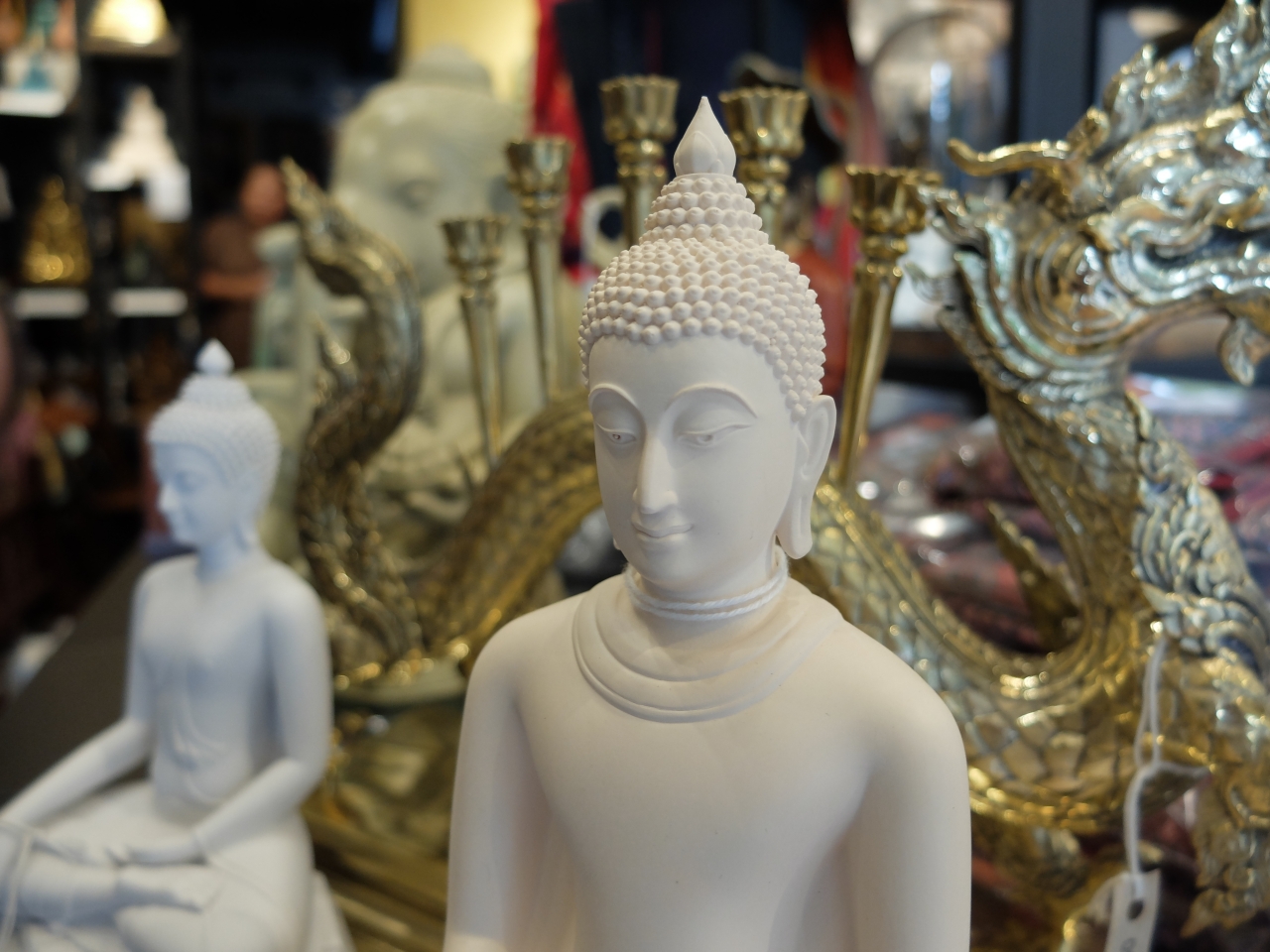
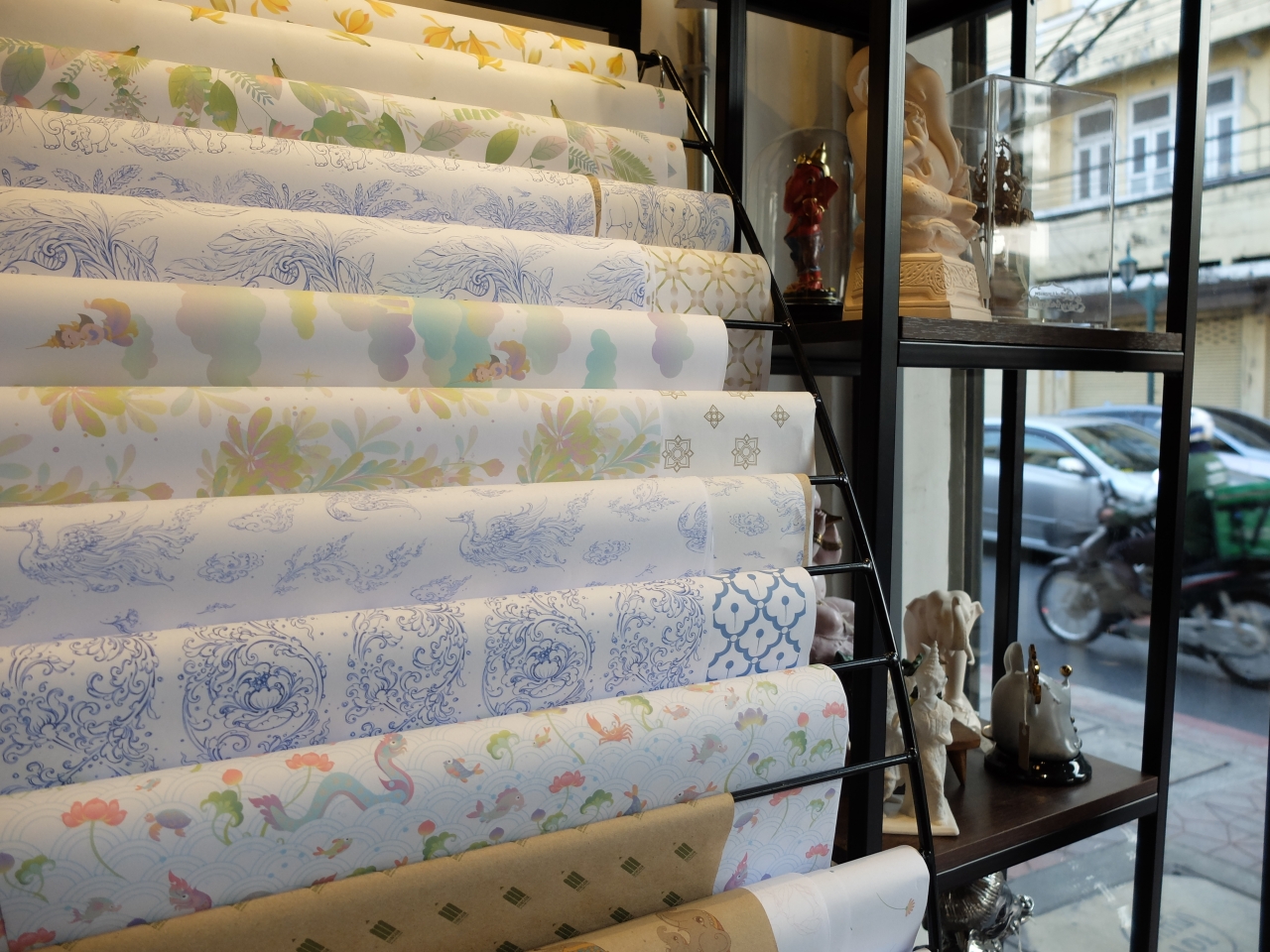
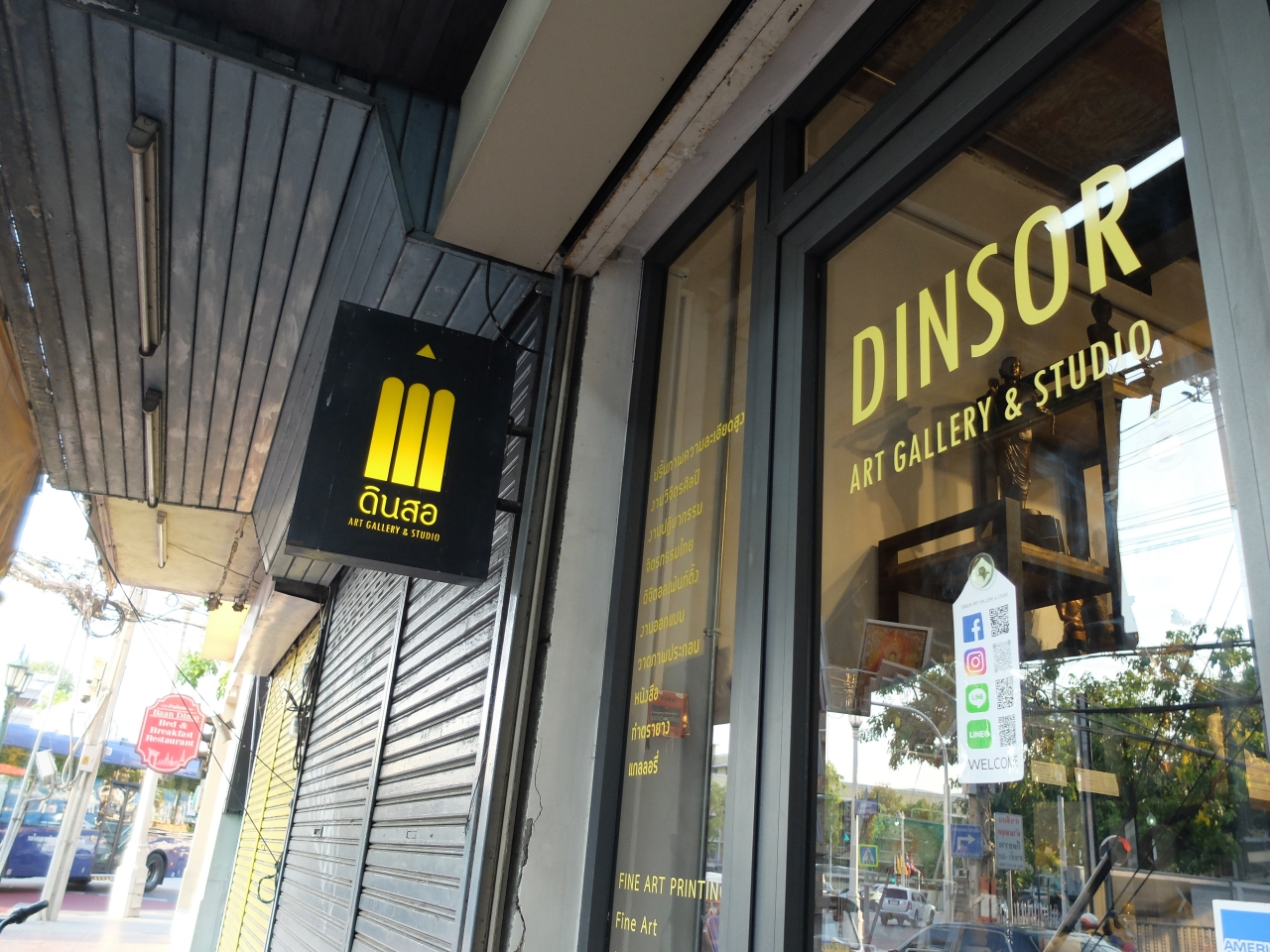
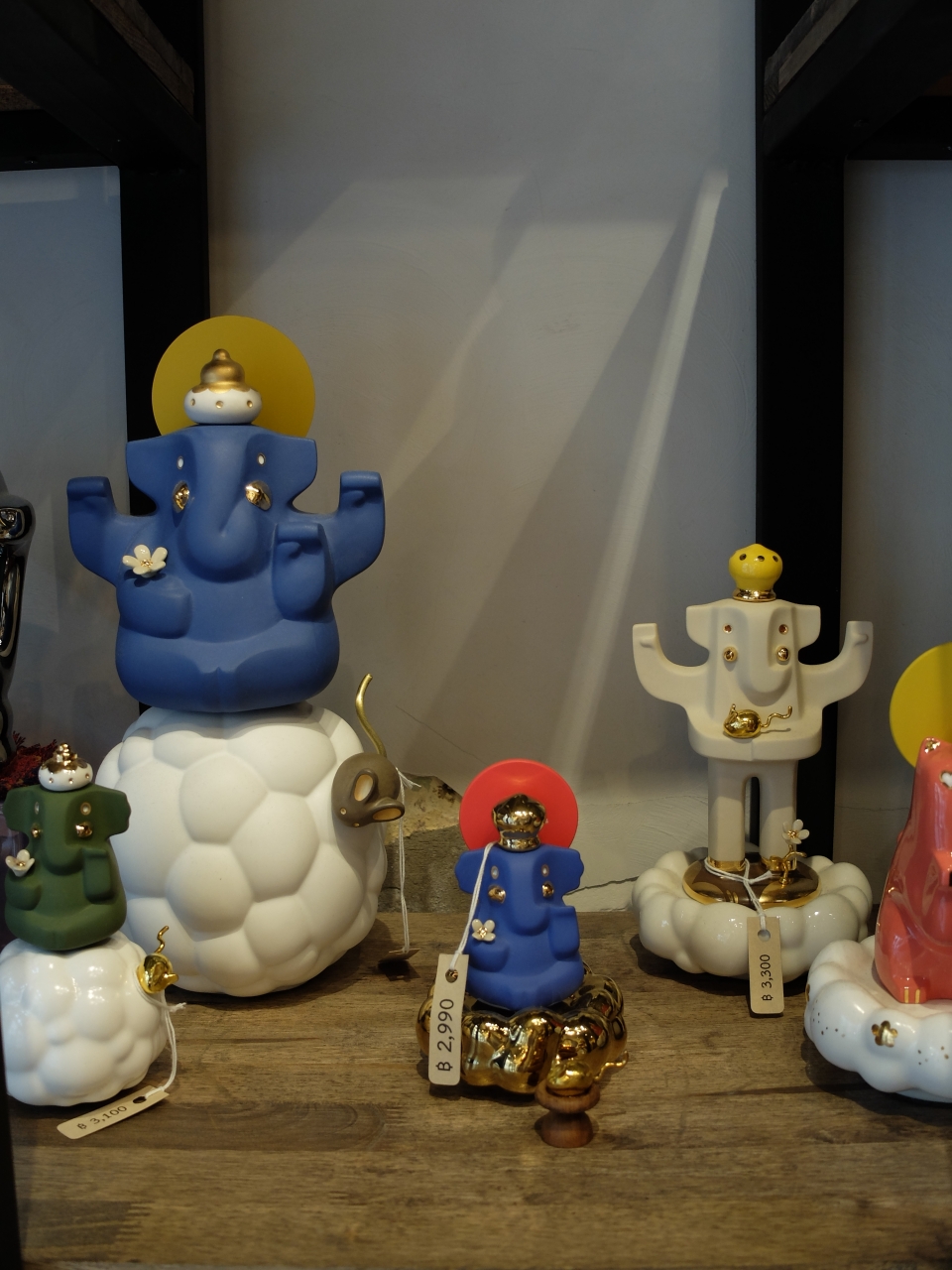
Walking Path Overview
Admiring the craft and beauty of thai buddhist art and artifact in a shophouse gallery while embrace a story of the Dinsor neighborhood
Recommendation and Tips
- You can ask Mr.Big the owner for cool recommendations on Thai art pieces
- These unique gift wrapping papers are designed by Dinsor Art Gallery & Studio which you could not find anywhere else!
| Operating Day: | Every Day |
| Time: | 11:00 to 22:00 |
| Price: | $$$ |
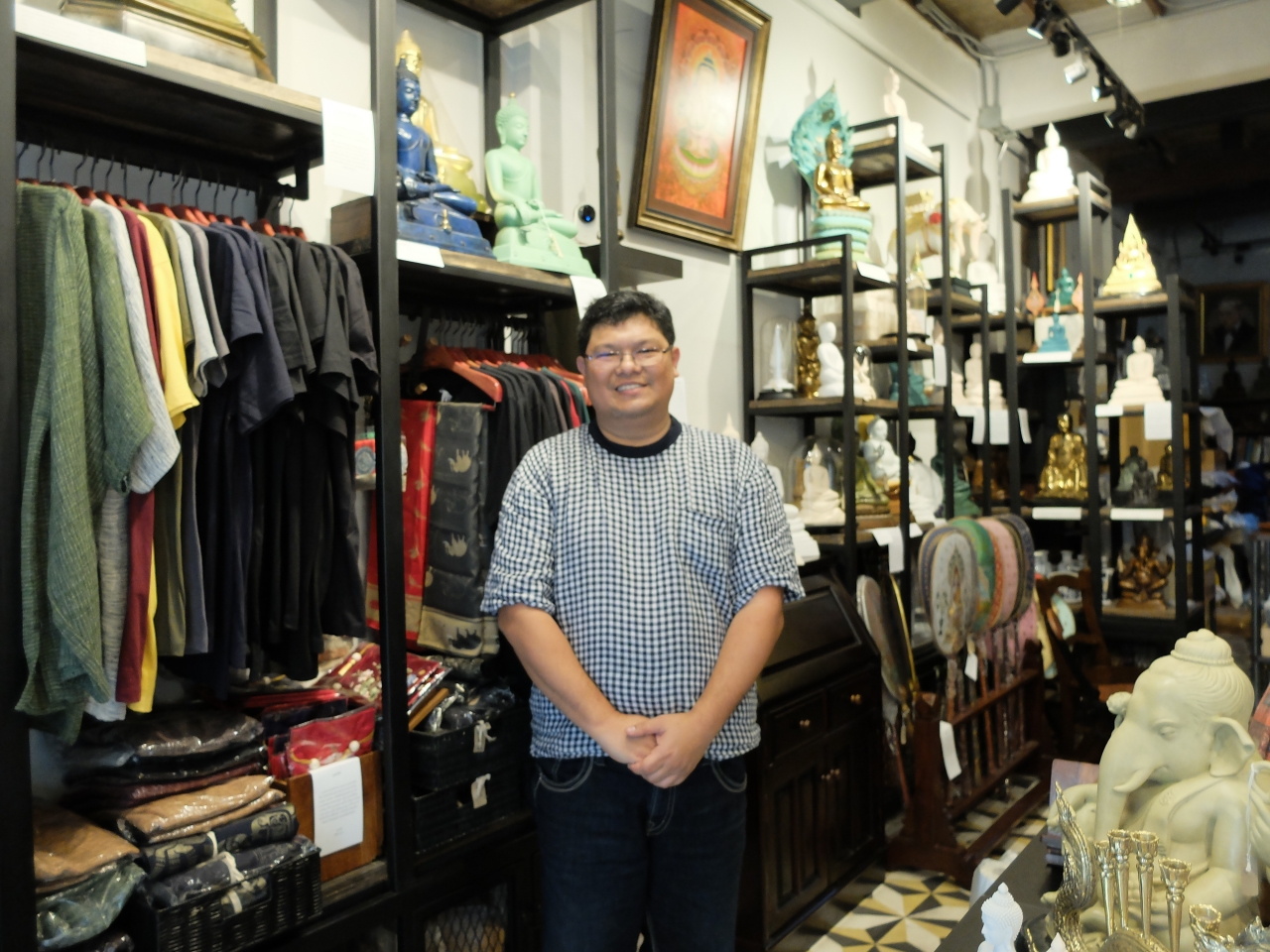

An art space featuring contemporary craftsmen offering unique souvenirs from Dinsor Road
Dinsor Art Gallery and Studio is an art shop that offers high-detail printing services. The studio has gathered a collection of contemporary Buddhist art pieces, which are cherished possessions for art enthusiasts interested in Buddhist art, all housed together in this space.
Dinsor Art Gallery & Studio is open daily from 09:00 to 19:00, except on Wednesdays. Anyone interested is welcome to visit and explore Buddhist art and enjoy the various artworks exhibited in the gallery at any time. If you wish to exhibit your artwork here, feel free to contact the store directly using the contact number provided on the storefront. Alternatively, if you would like to acquire some one-of-a-kind souvenirs from Thailand with a more crafted and stylish flair, you should not miss this small shophouse!
Do you know that this shop has revived the old shophouse? The intriguing aspect of Dinsor Art Gallery & Studio lies in the process of renovating this room. You can spot traces from the past, including the colors used, materials from different eras, decorations, lifestyles, and preferences of people, as well as the needs and suitability of each generation and business type. Just as challenges and issues arise during the renovation, it reflects the meticulousness and planning required when working with an old building, likened to handling a pencil where precision and courage are simultaneously employed to achieve success, as 'Dinsor' also means pencil in Thai. That is how Dinsor Art Gallery & studio has emerged.
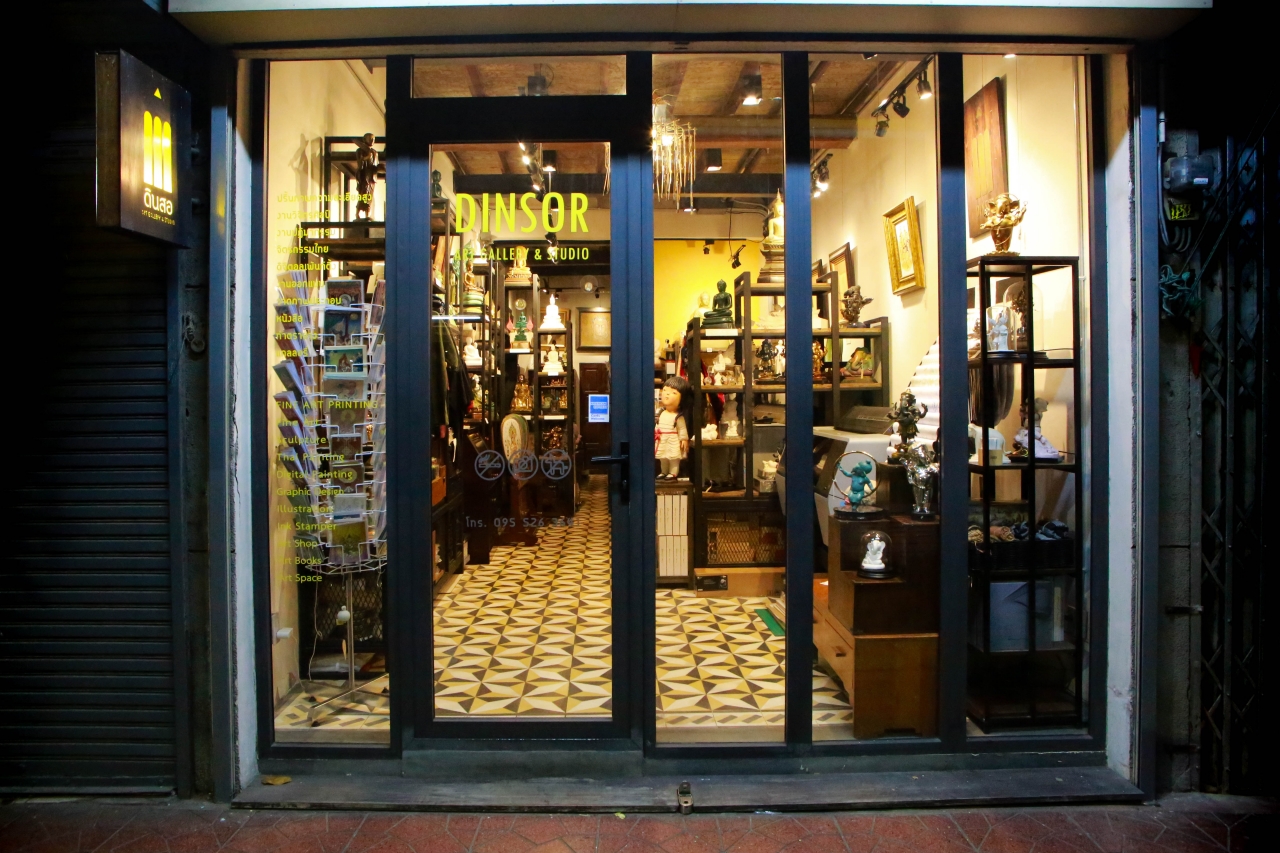
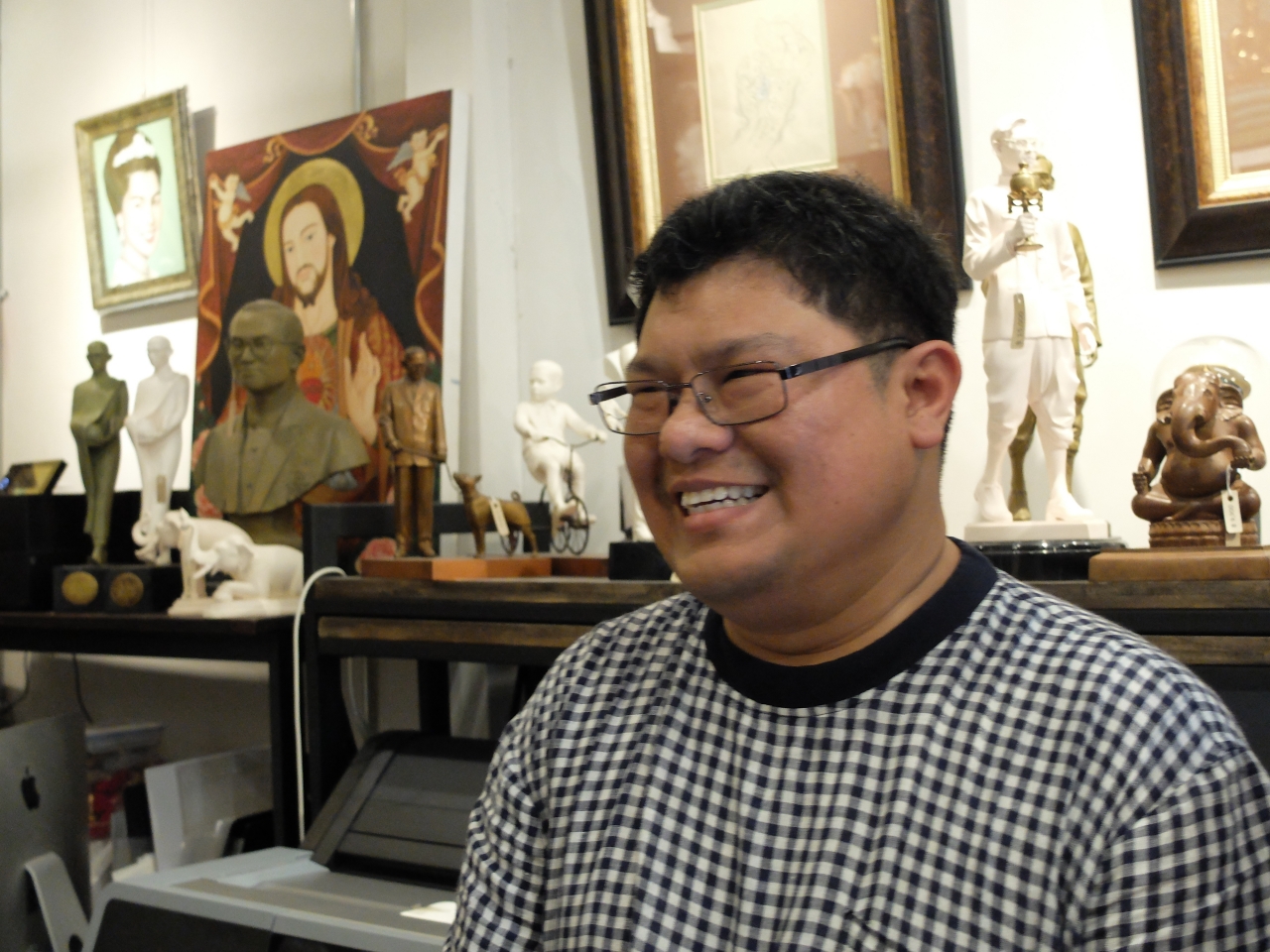
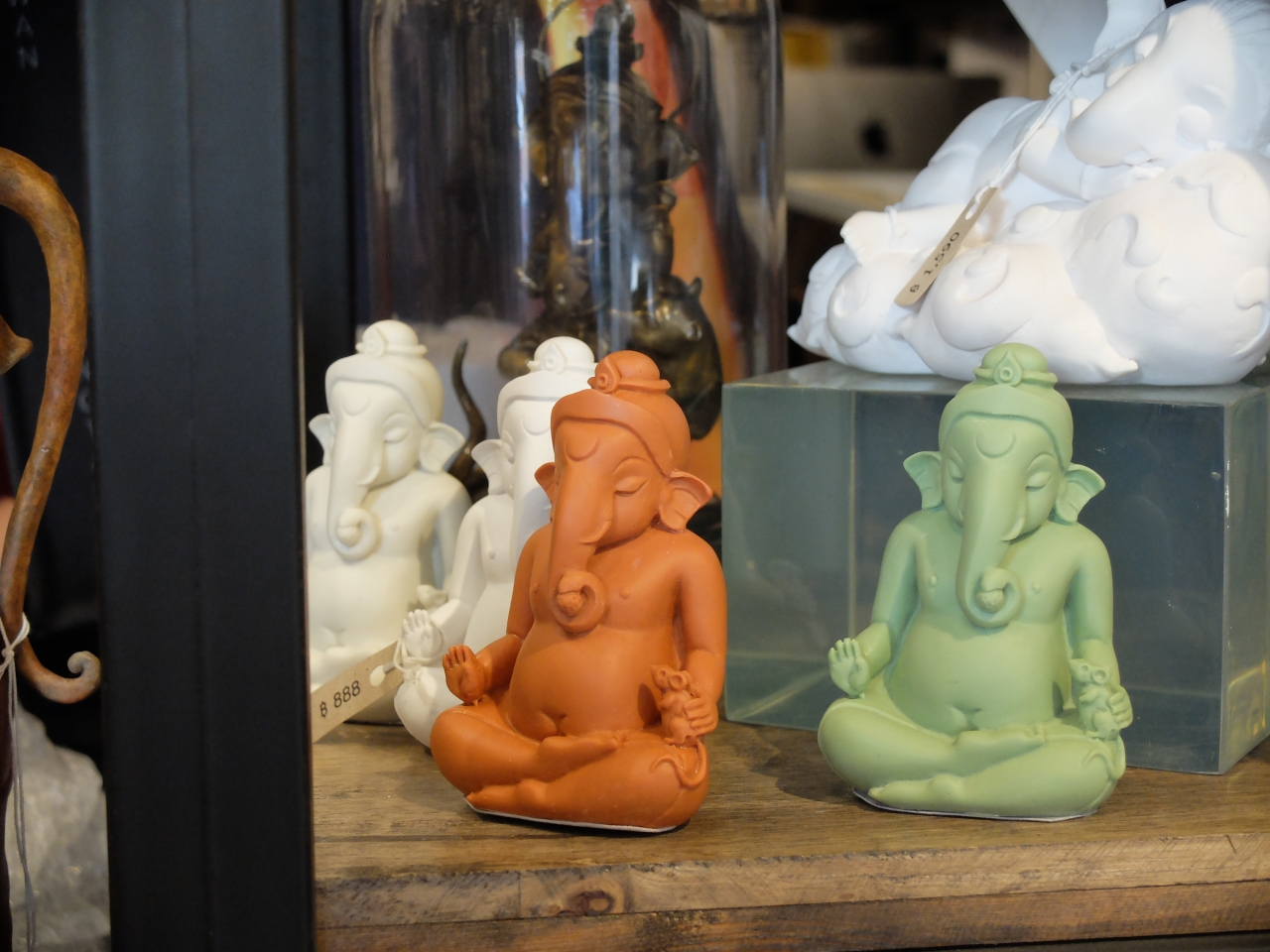
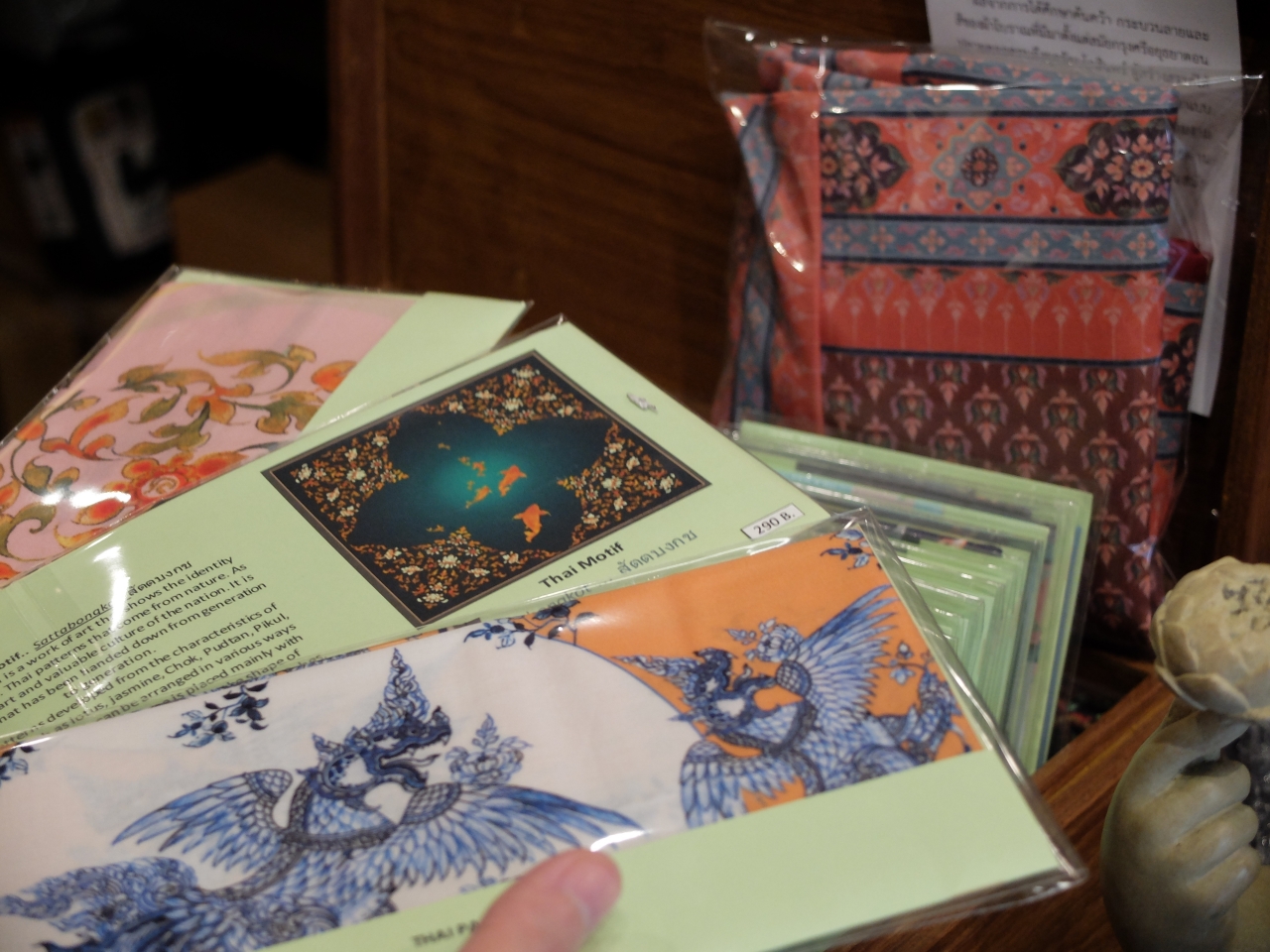
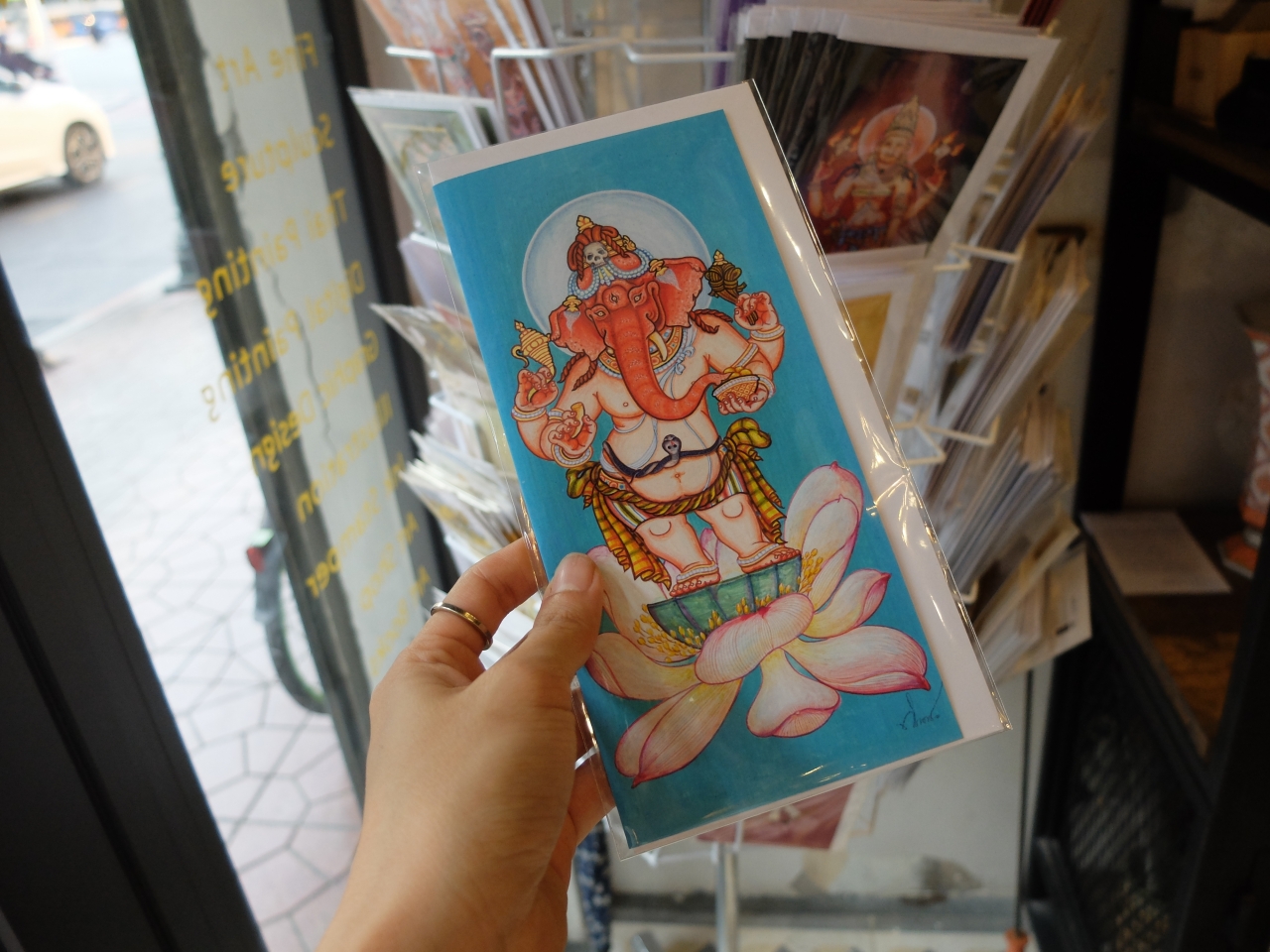
Democracy Monument
A memorial piece of history symbolizing Thailand's transition in the political ruling system
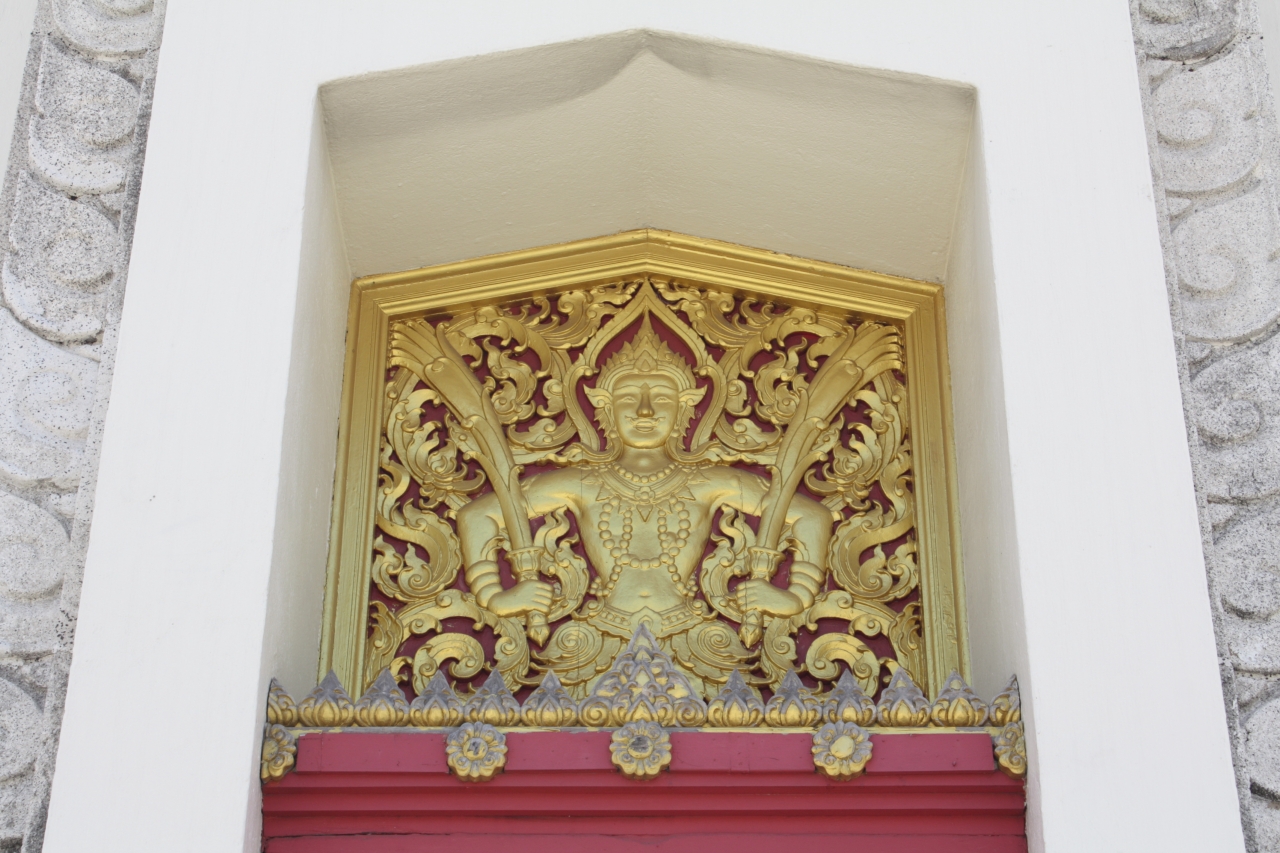
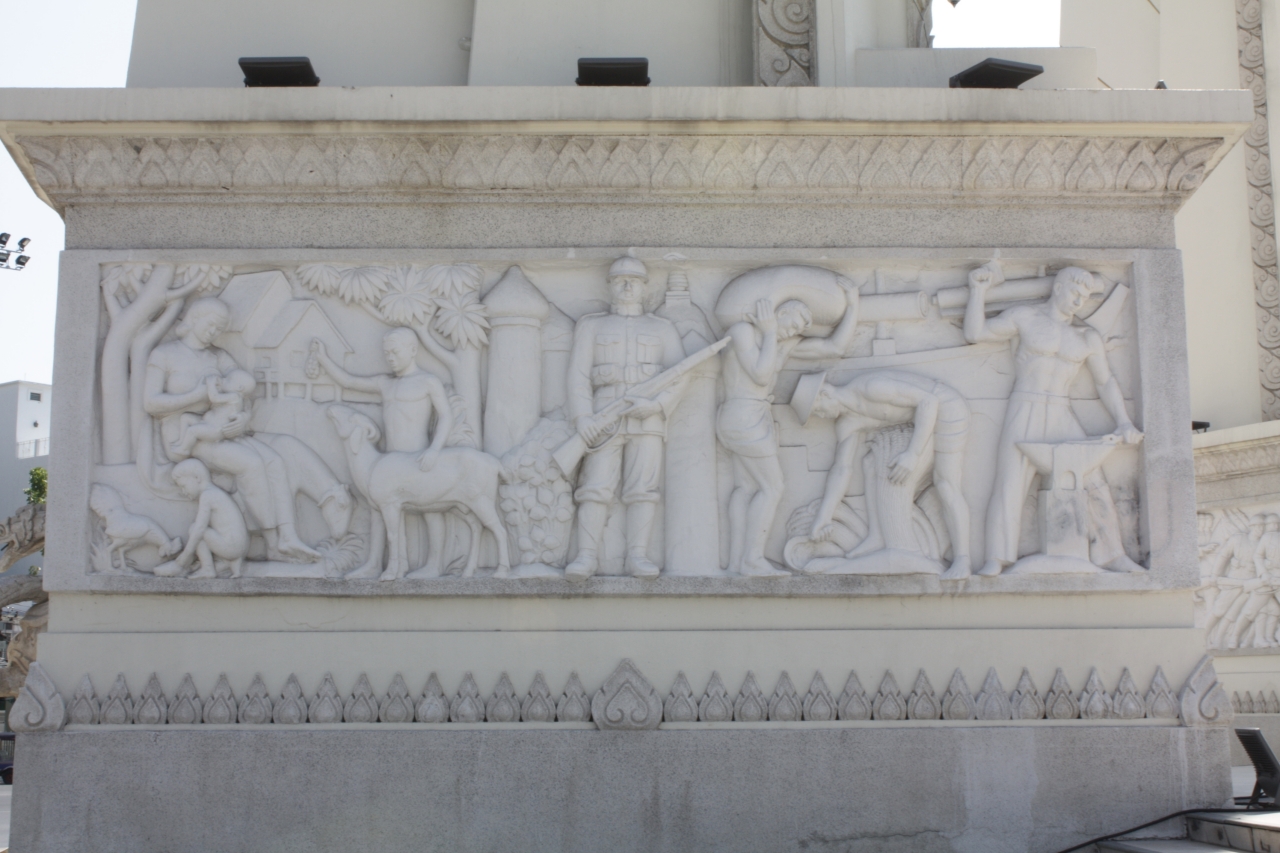
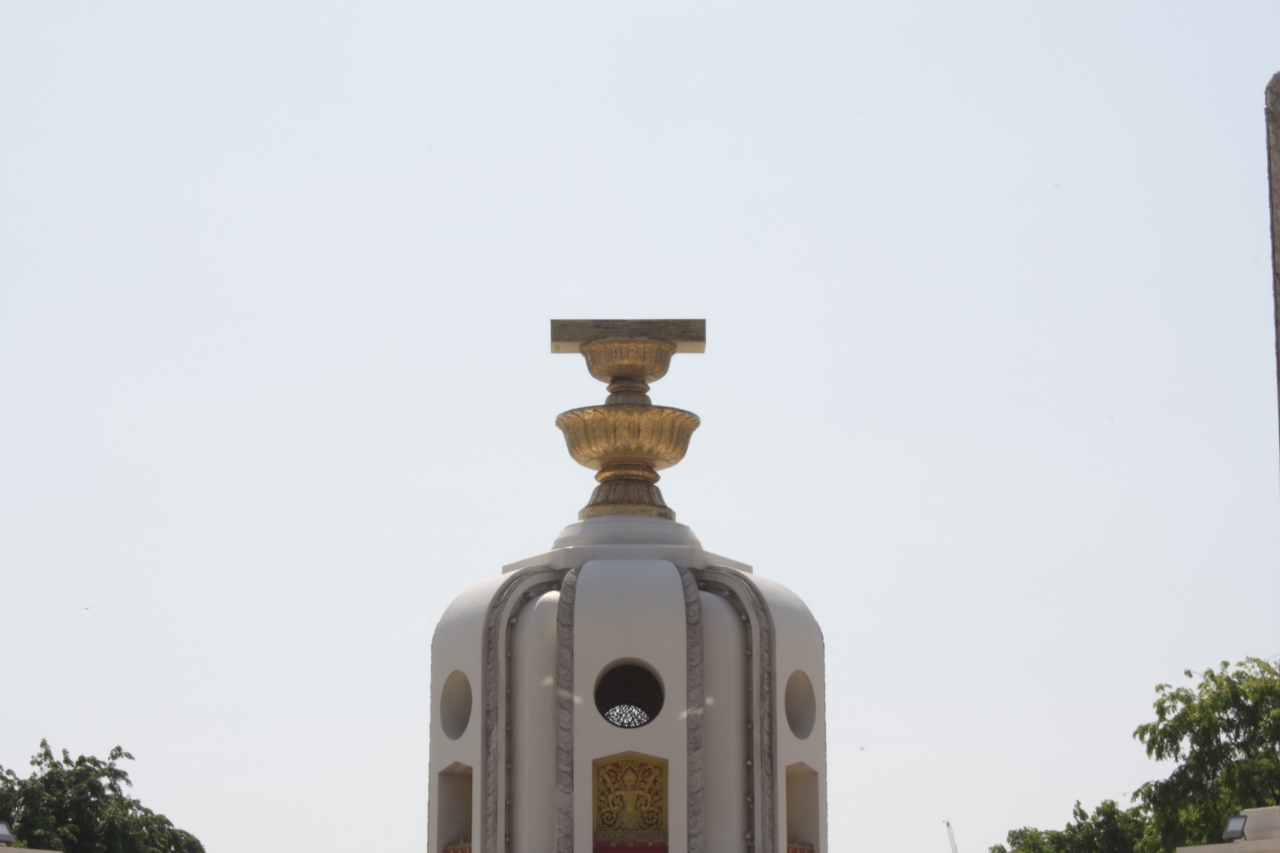
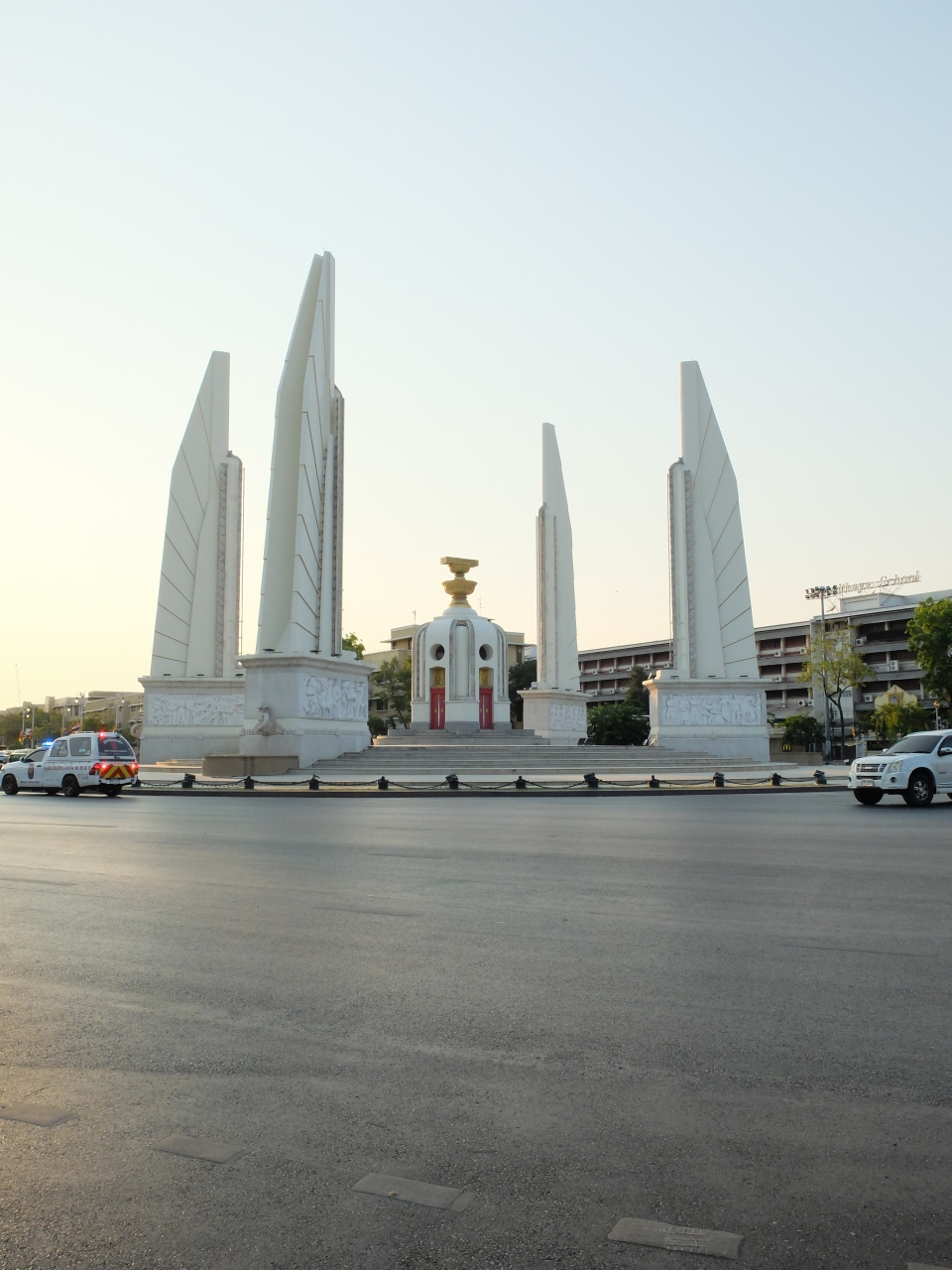
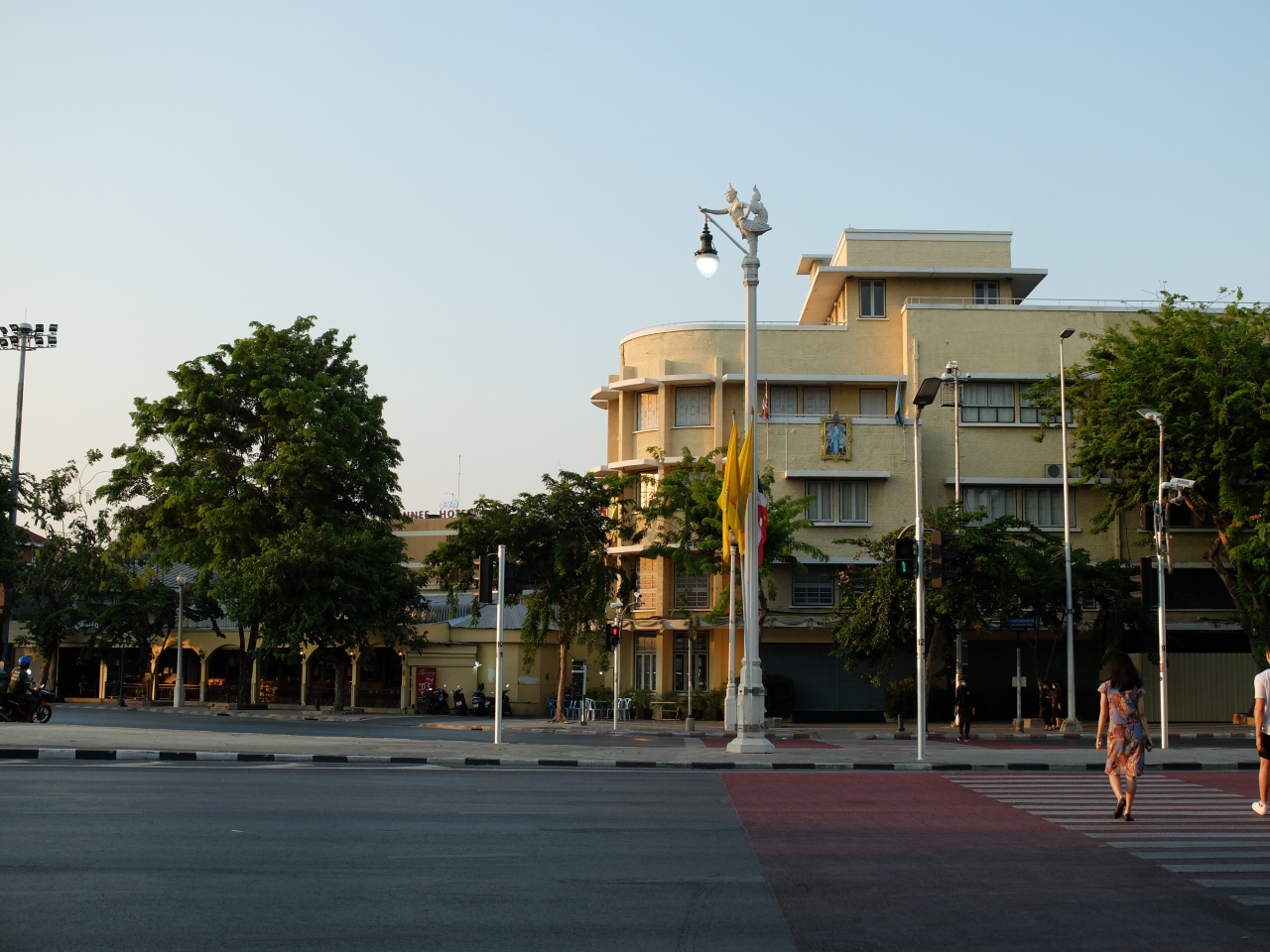
Walking Path Overview
Admire and learn the stories behind an enormous monument amidst the historic streets of the City of Angels.
Recommendation and Tips
- Do not attempt to cross the road to get to the monument
- Becareful of protests
| Operating Day: | Every Day |
| Time: | 24 hours |
| Price: | Free |


A remembrance of the establishment of a constitutional monarchy following the Siamese coup d'état in 1932
"This monument will serve as the focal point of all progress. For instance, when traveling from various roads departing from Bangkok towards the city, this monument will mark the starting point. Ratchadamnoen Road, aligned with the monument, will be adorned with an elegant building that pays homage to our country."
The speech by Field Marshal P. Pibulsongkram, Prime Minister at the time, during the opening ceremony of the Democracy Monument on Ratchadamnoen Klang Road on June 24, 1940, marked a significant day in the history of Thailand. It could be the first day when buildings or cultural objects from the People's Party era made their first official appearance after the revolution and change of government, marking eight years since the revolution in 1932.
Democracy Monument sits on a street called Ratchadamnoen.
Ratchadamnoen Road was initially constructed in 1899 during the absolute monarchy era. Its purpose was to serve as a royal route connecting the Grand Palace to Dusit Palace or the summer palace of King Rama V in the north. However, the significance of the road, which translates to 'The Royal Tour,' evolved after the 1932 change of government.
The People's Party government began a complete transformation of the landscape on Ratchadamnoen Road in 1937, starting with the removal of mahogany trees that had been planted since the reign of King Rama V. This transformation involved expanding roads, constructing commercial buildings, hotels, shopping centers, and erecting the Democracy Monument.
The monument was started on June 24, 1939, by Field Marshal P. Pibulsongkram, designed by M.L. Pum Malakul and sculpted by Sitthidech Saenghirun. Professor Sin Pirasi (Corrado Feroci) who established a renowned Fine Art University; Silapakorn University, is the supervisor of constructing the monument. The monument officially opened on March 24, 1940.
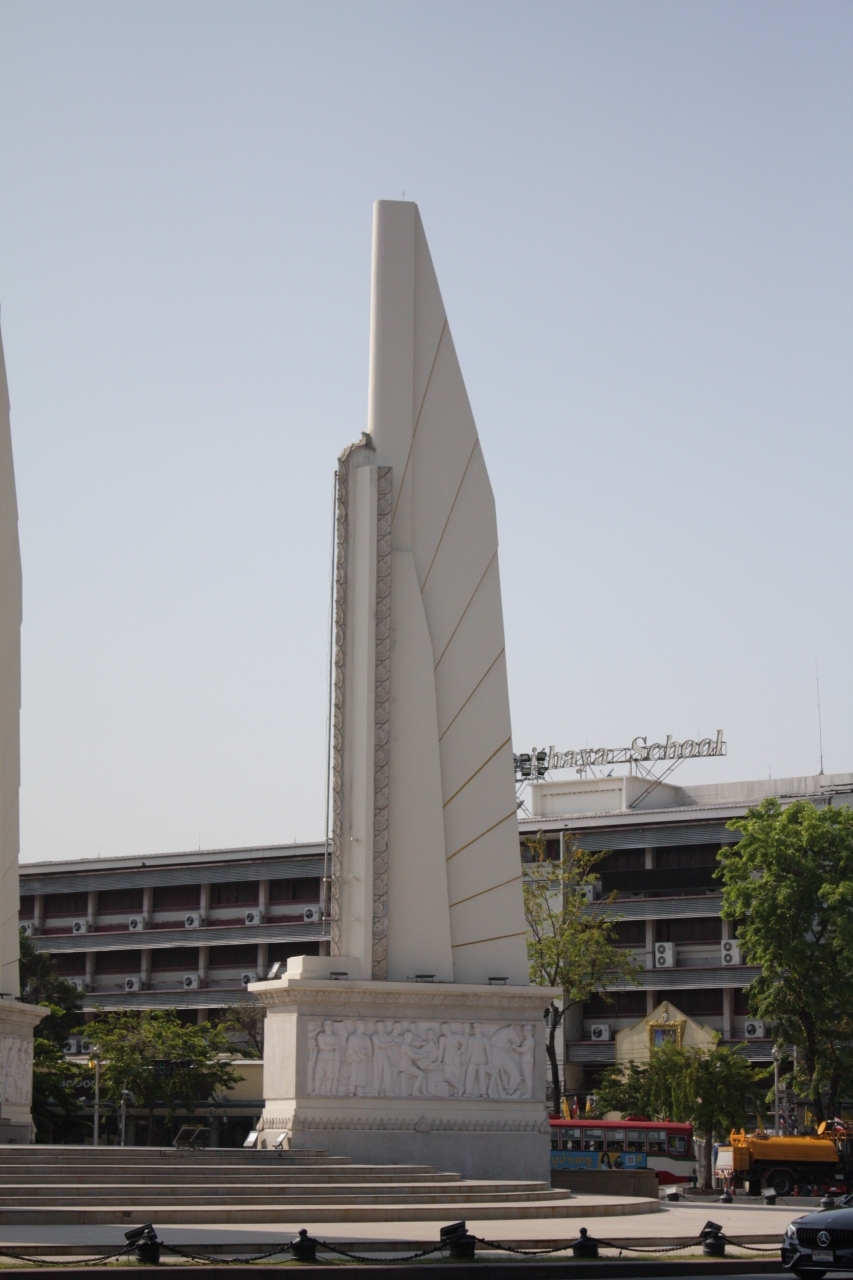

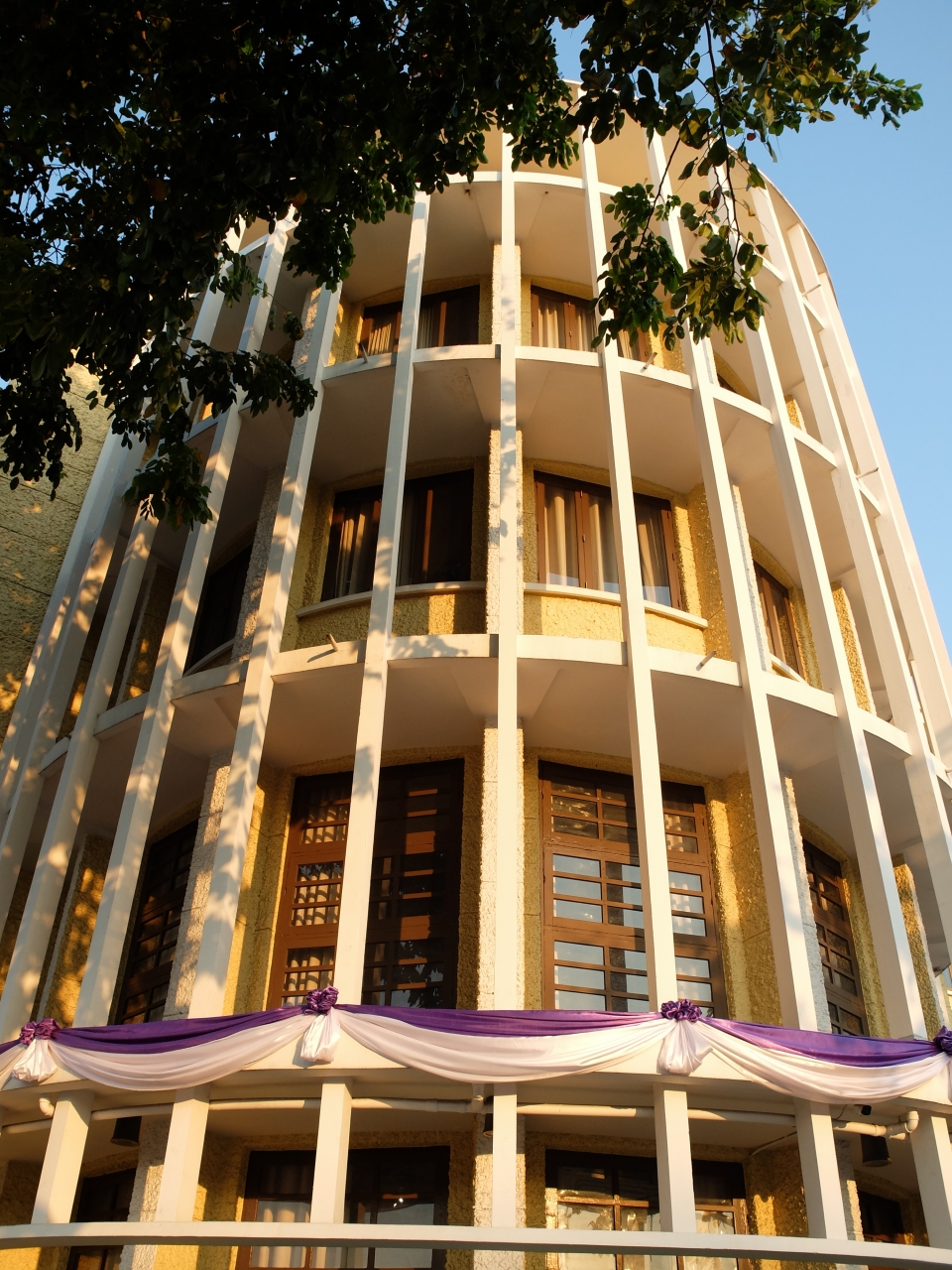
The monument resembles a box holding the Thai Constitution, positioned atop two golden bowls on a copper turret. The monument's base features small steps, and it was once surrounded by 75 small cannons. The wings of the monument stand at 24 meters tall, symbolizing the date of the 1932 coup, which occurred on June 24. The box itself is 3 meters tall, representing the month of June, when the coup took place. The cannons and chains adorning the monument signify unity and the year of the coup in the Buddhist calendar.
The base of the monument boasts four reliefs depicting the events of the 1932 coup. Additionally, the turret is adorned with six gates, each representing a policy of the Phibul government, such as independence, peace, equality, freedom, economy, and education.
The architectural style of those buildings around the monument were designed in Art Deco style which is quite popular during that time as well as many people said it represents equality!
Contributed by
Studio Us
Architectural conservationist studio aiming to preserve and pass on the wisdom of Architectural Heritage








 Previous Destination
Previous Destination